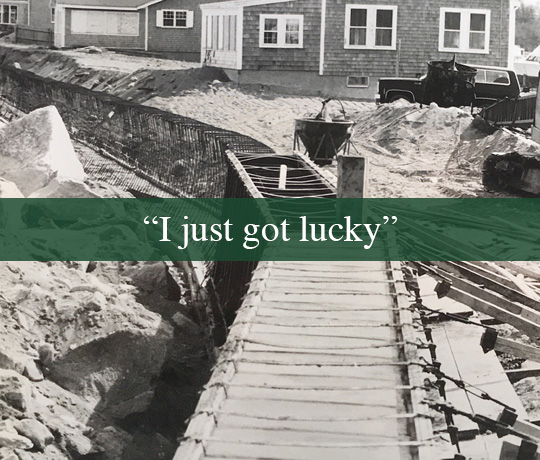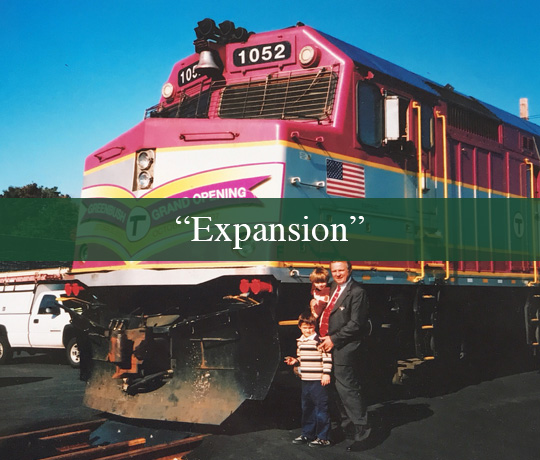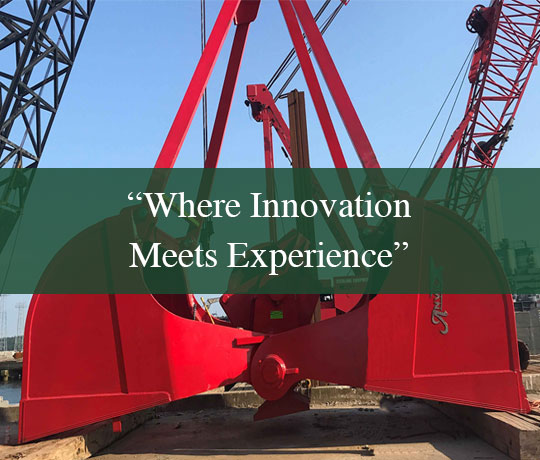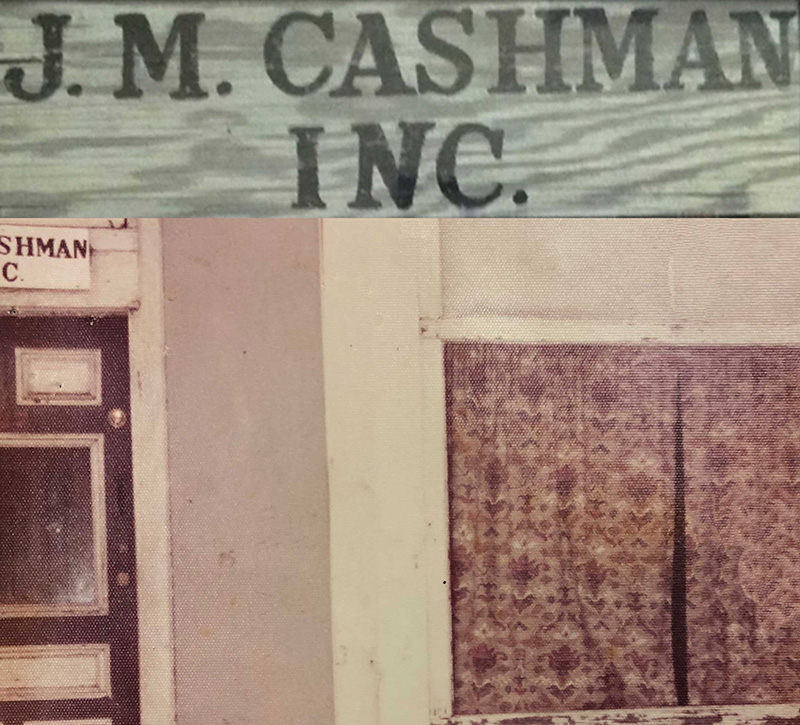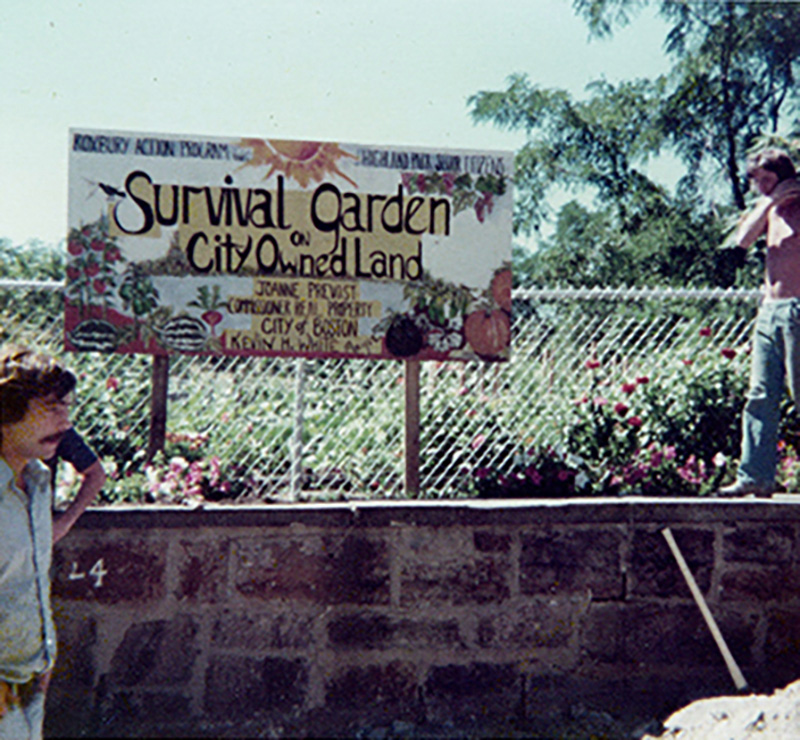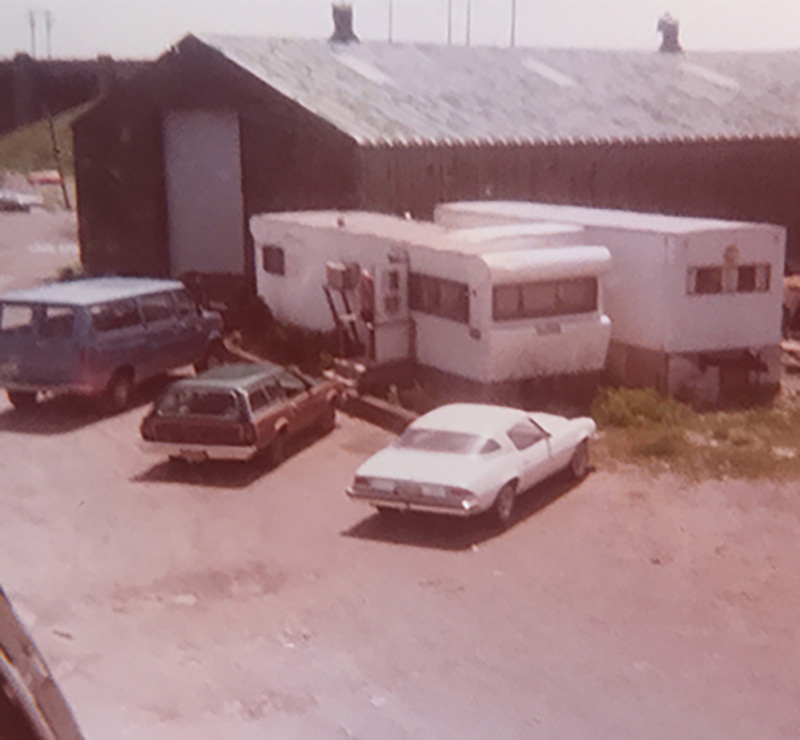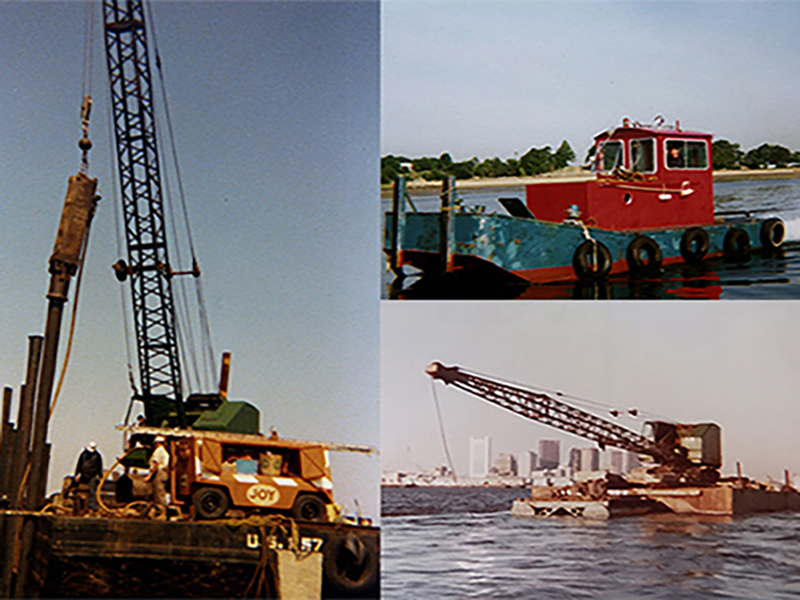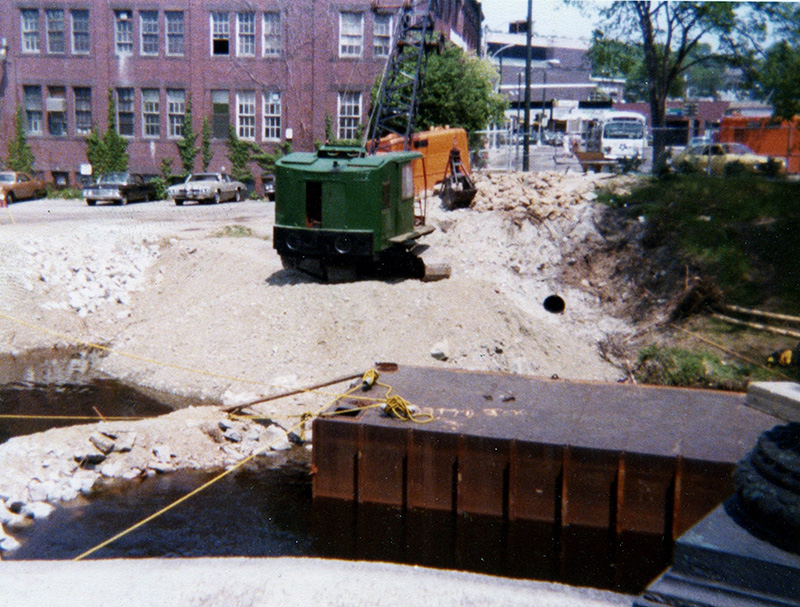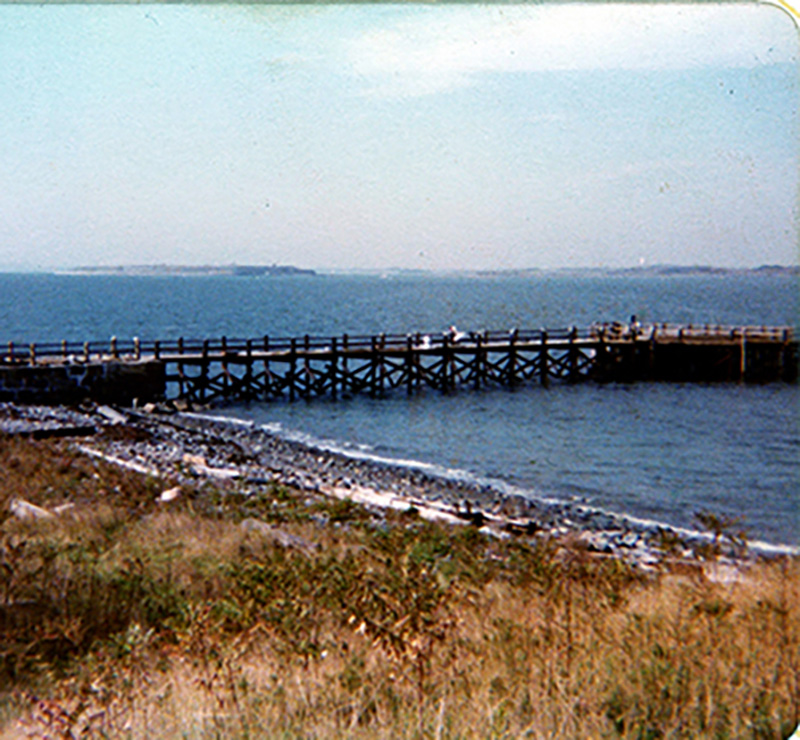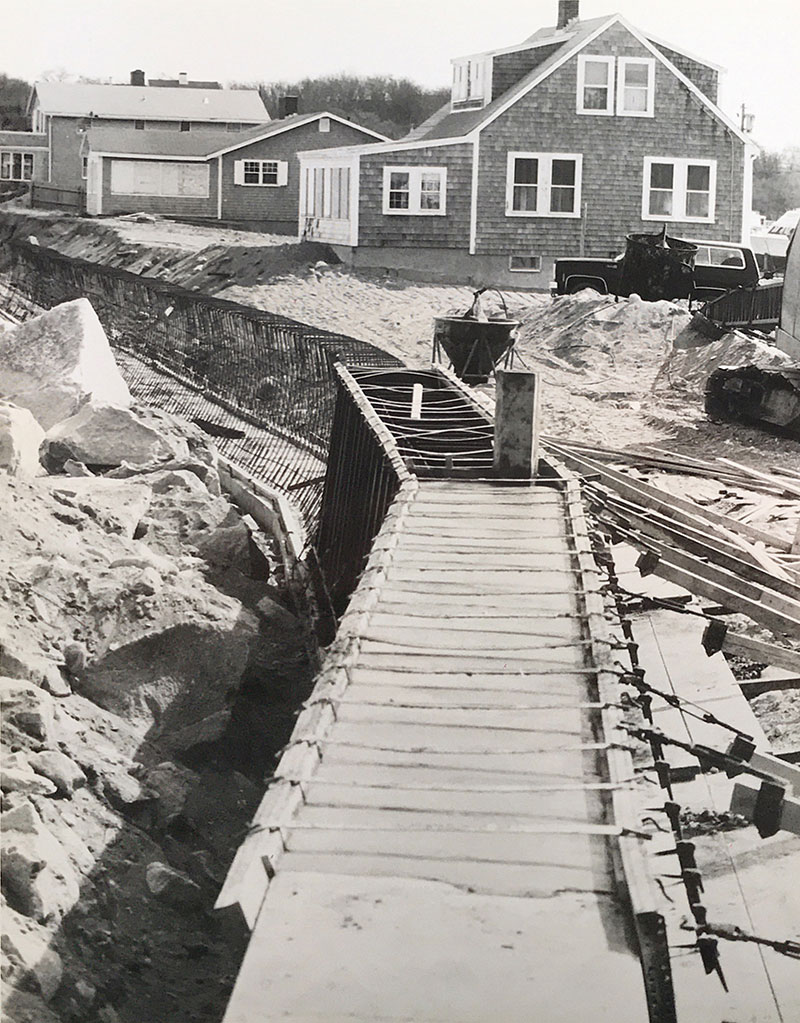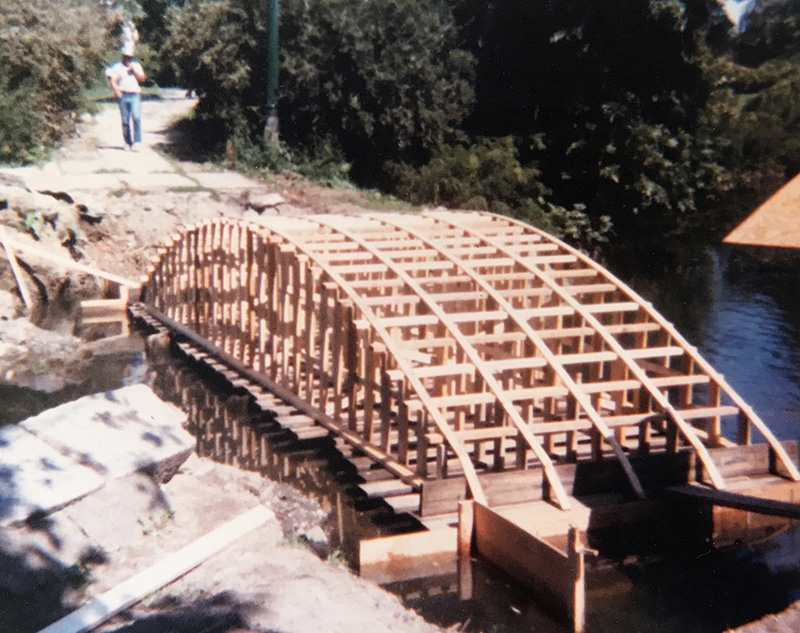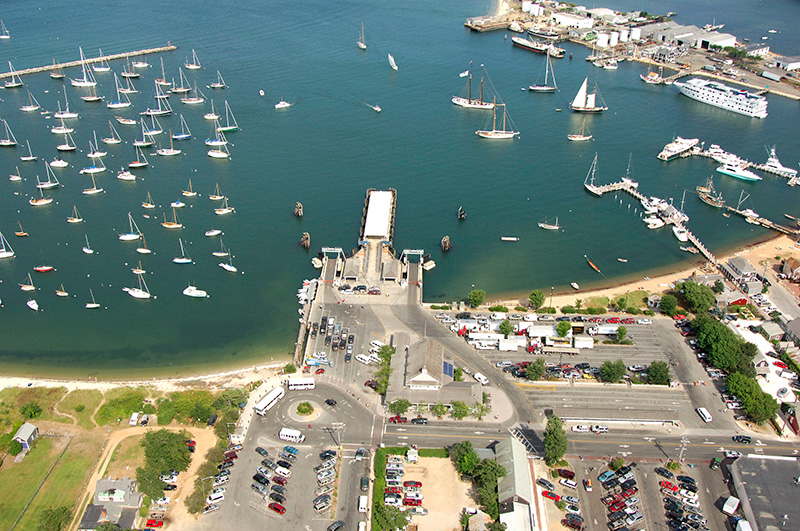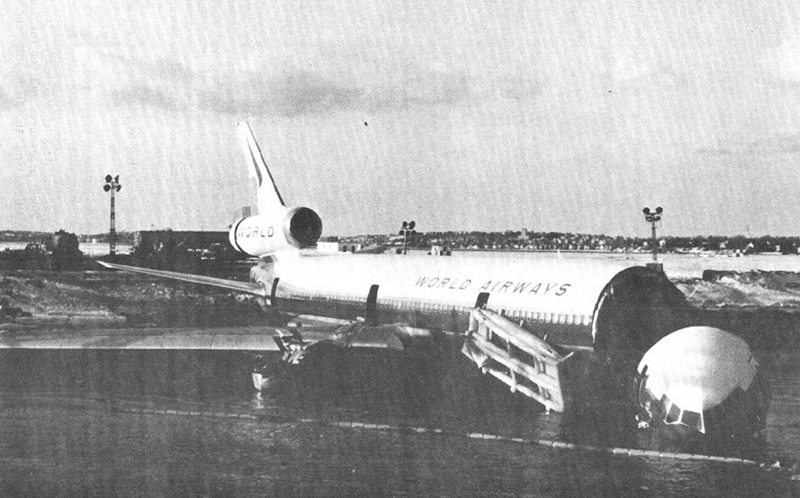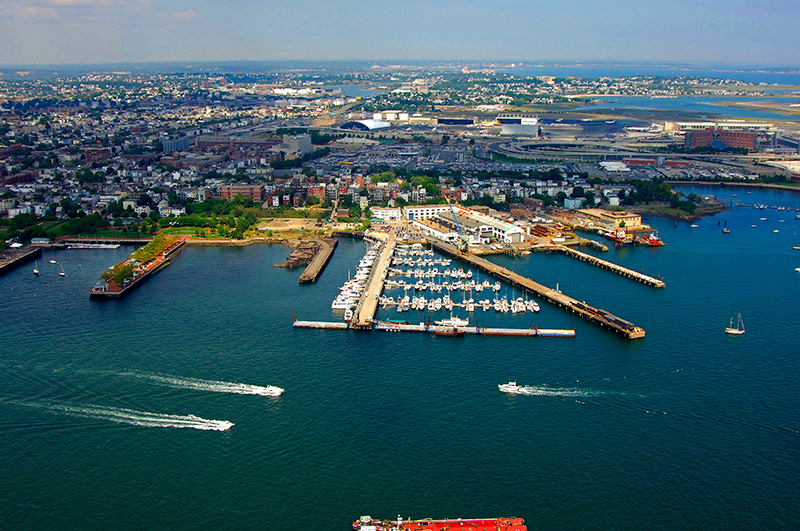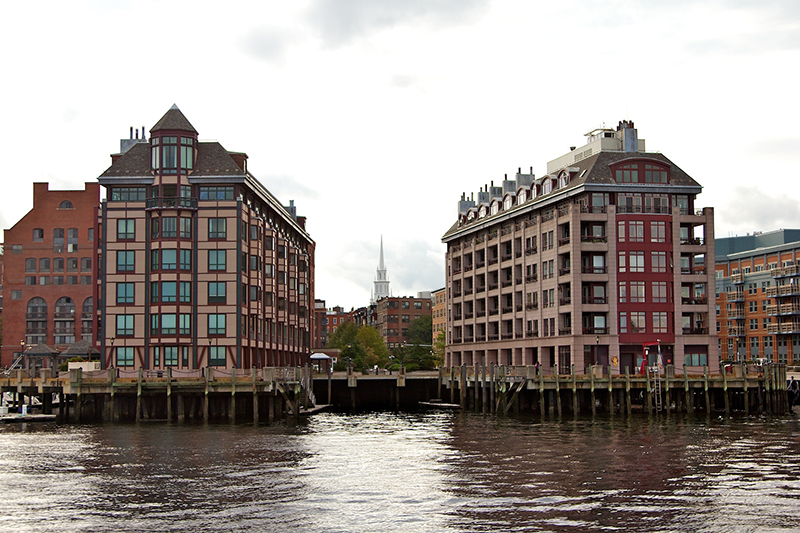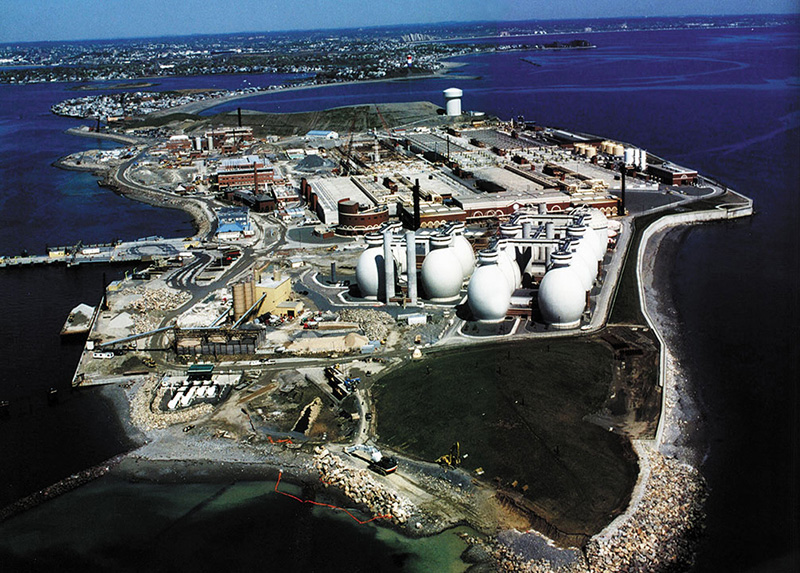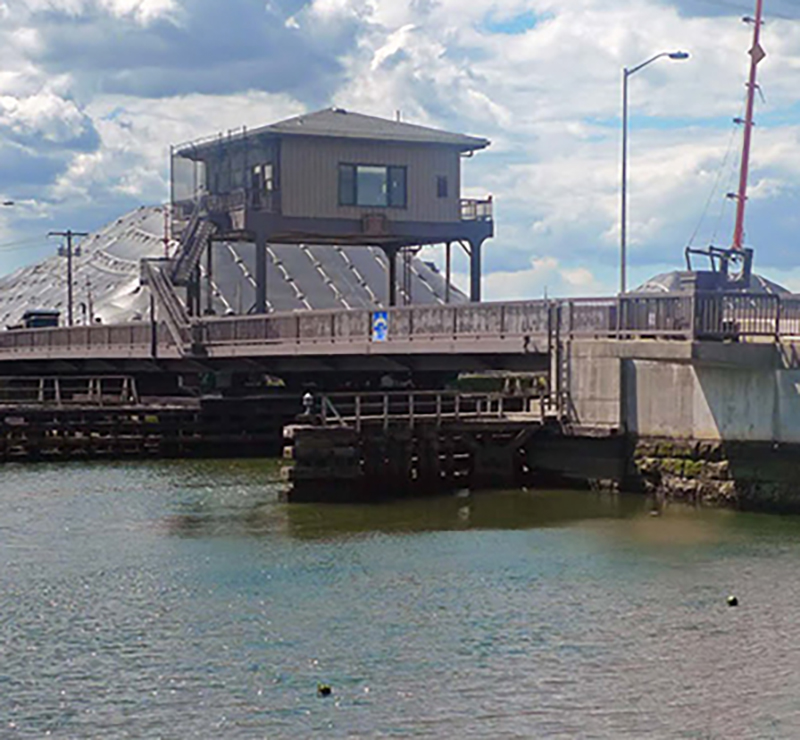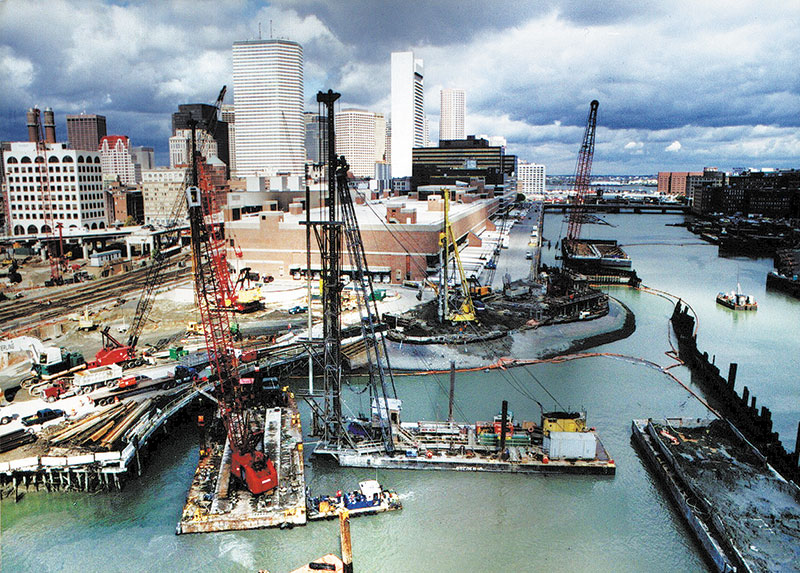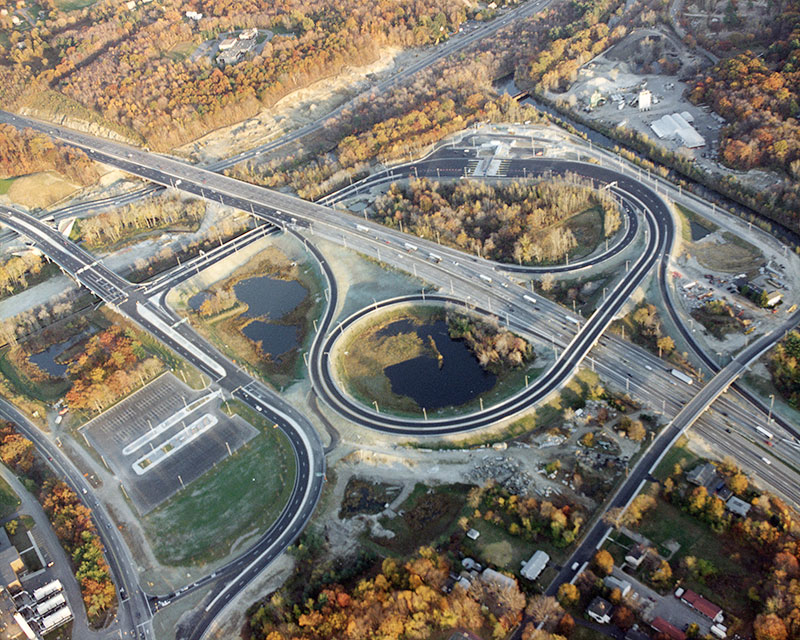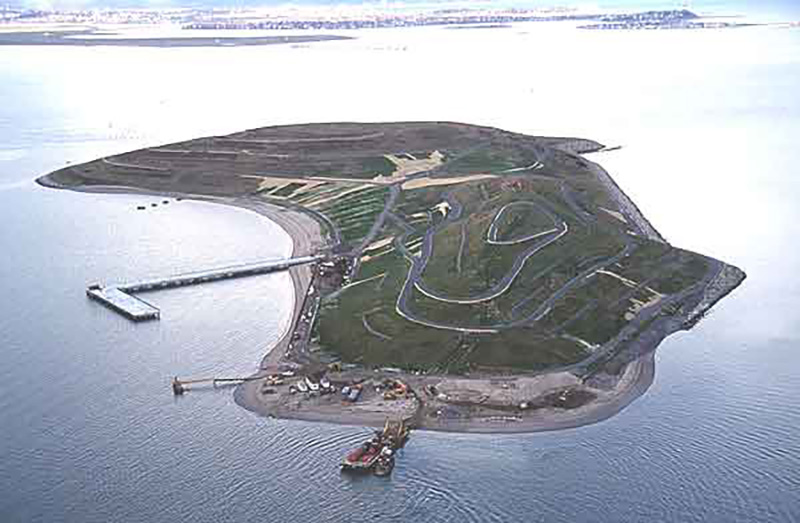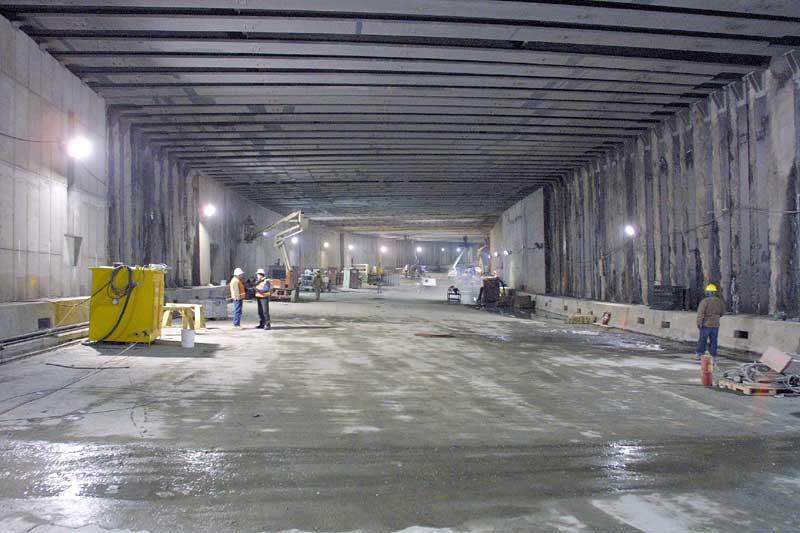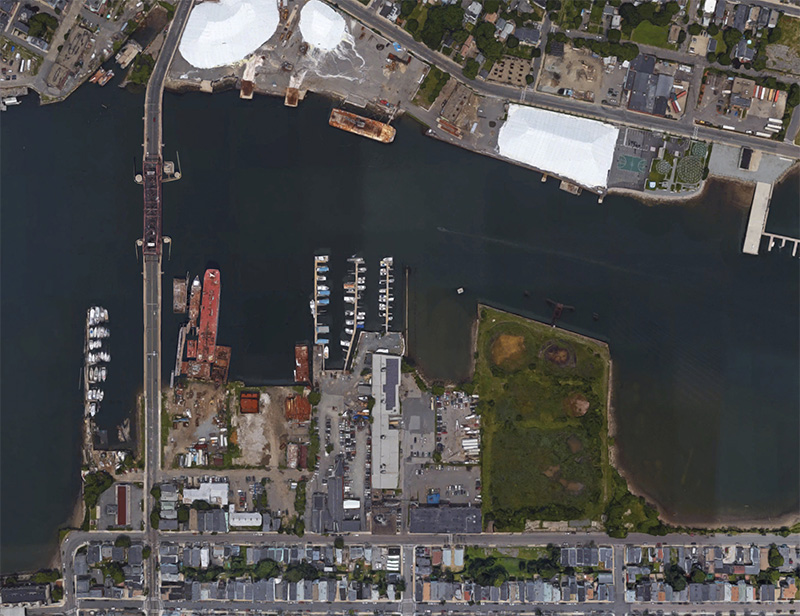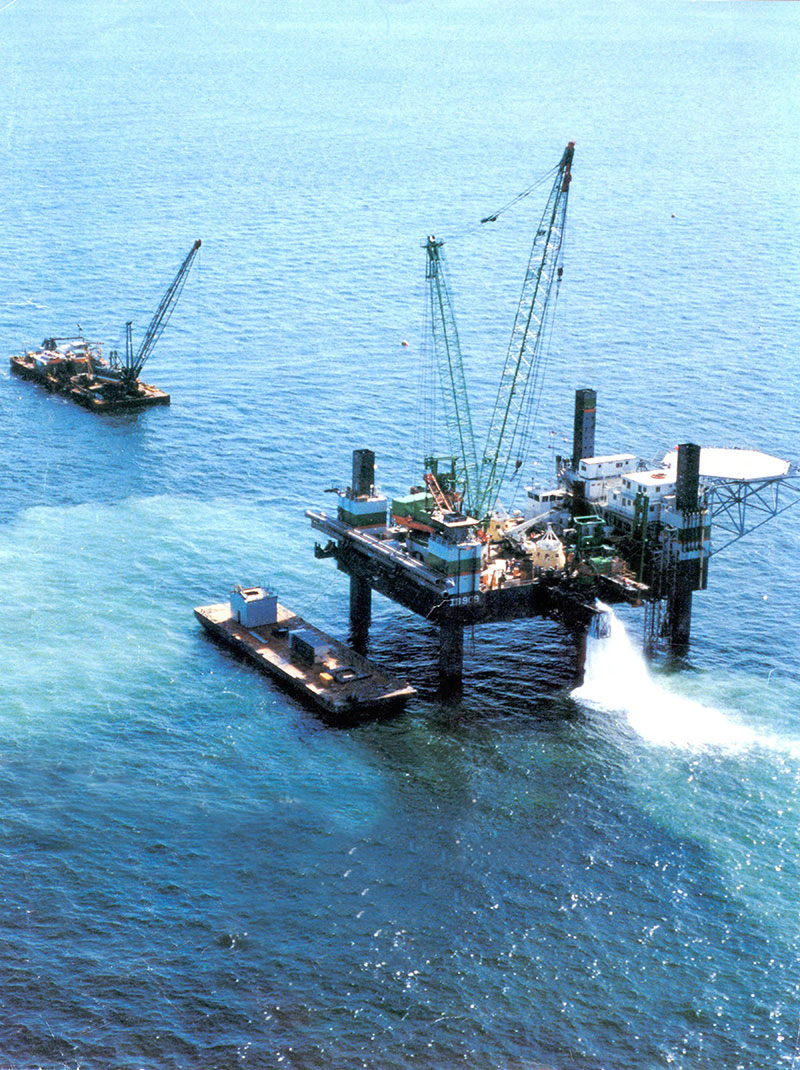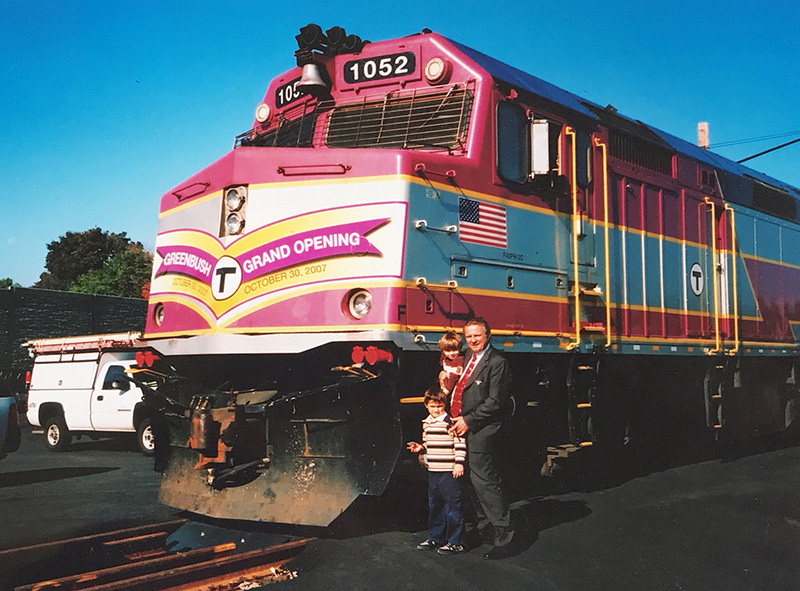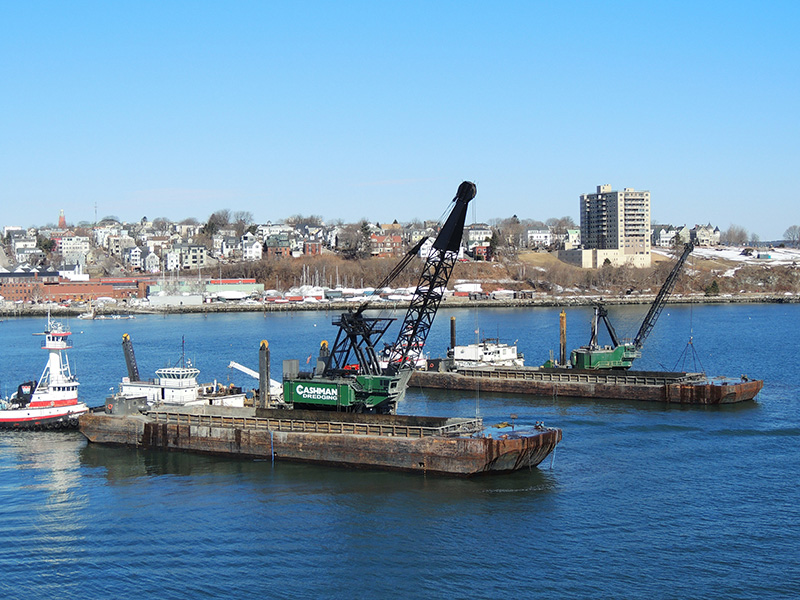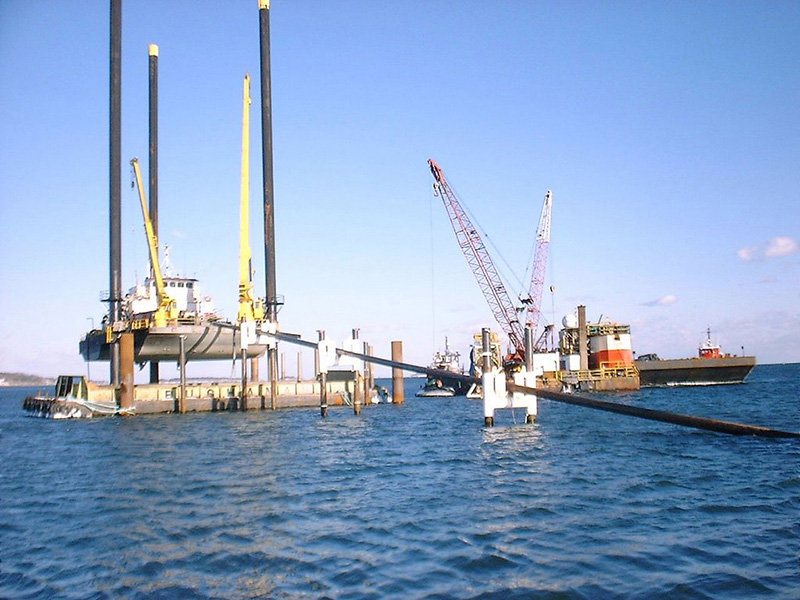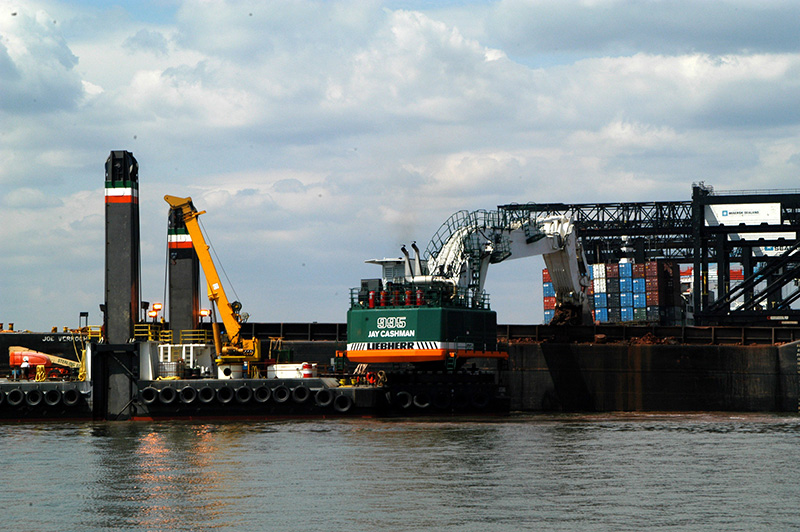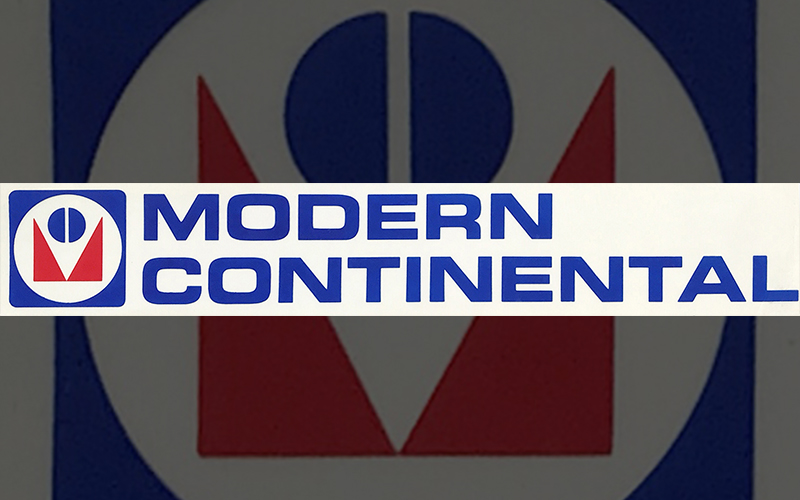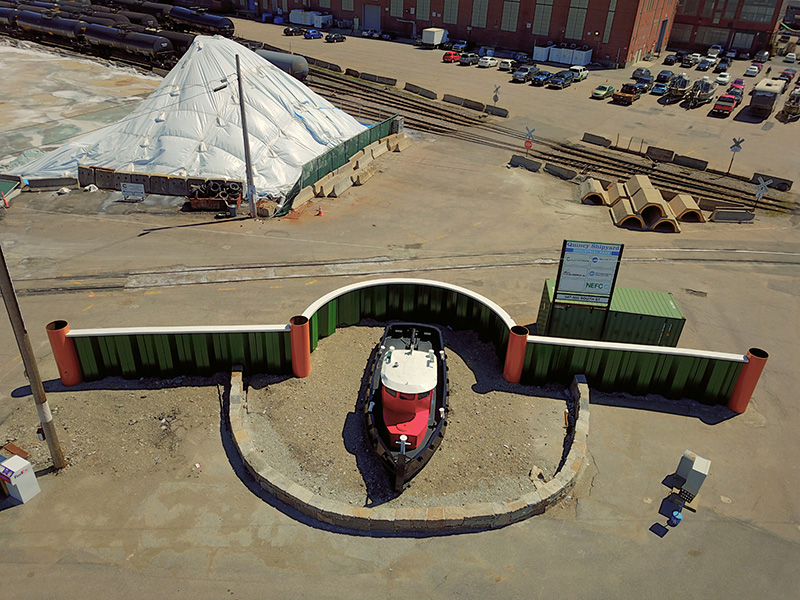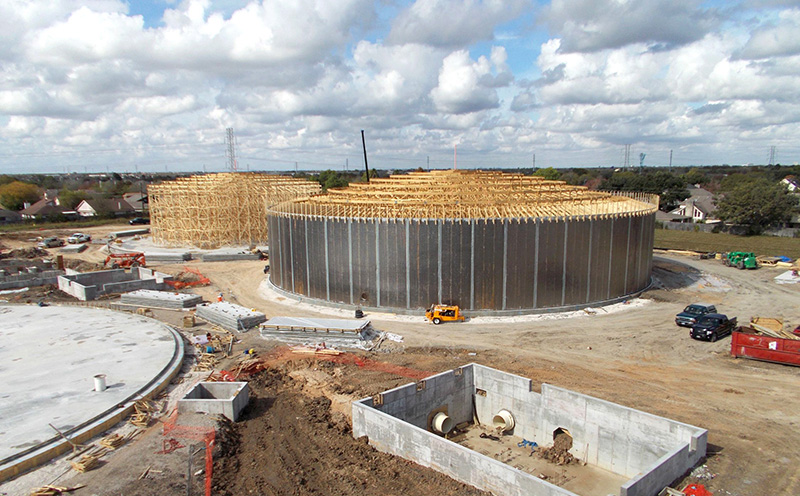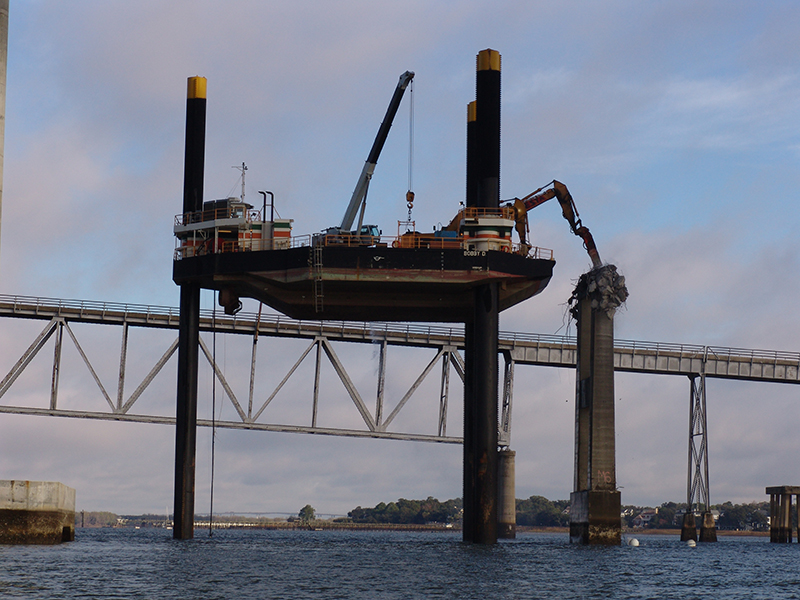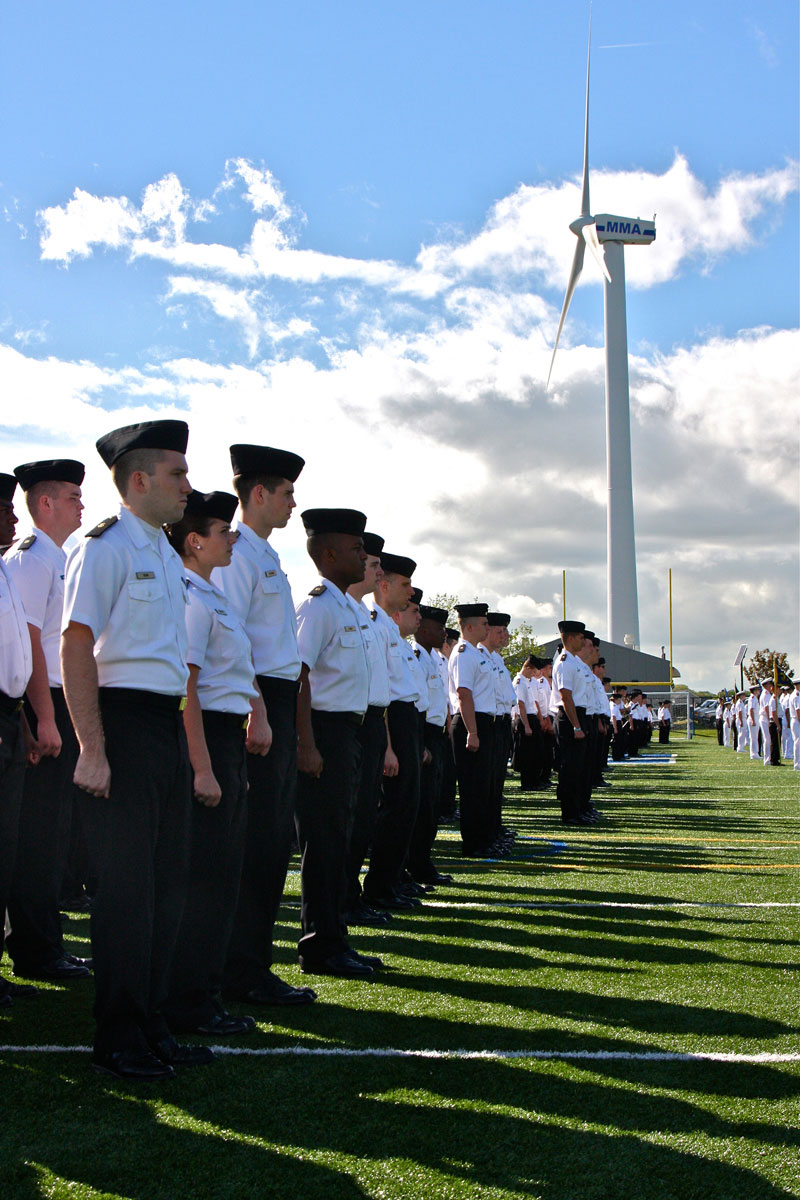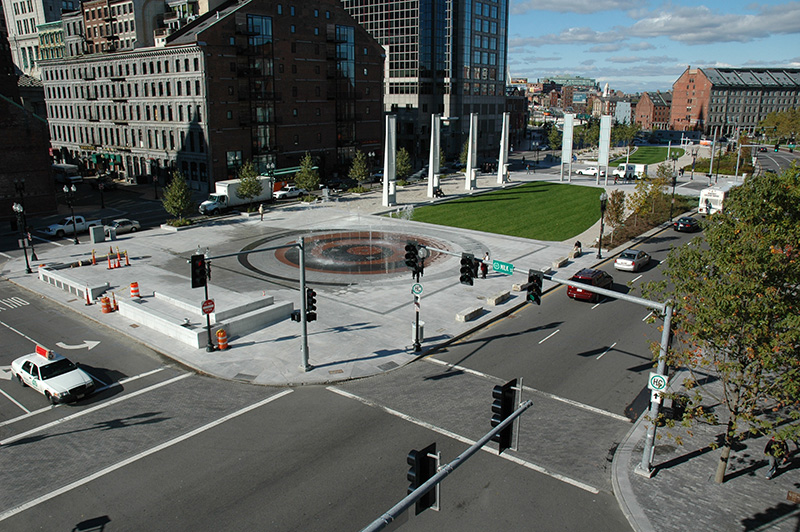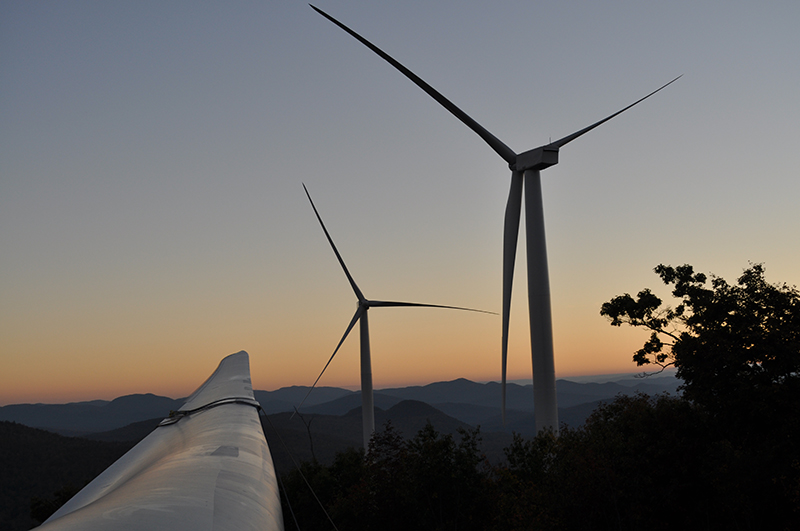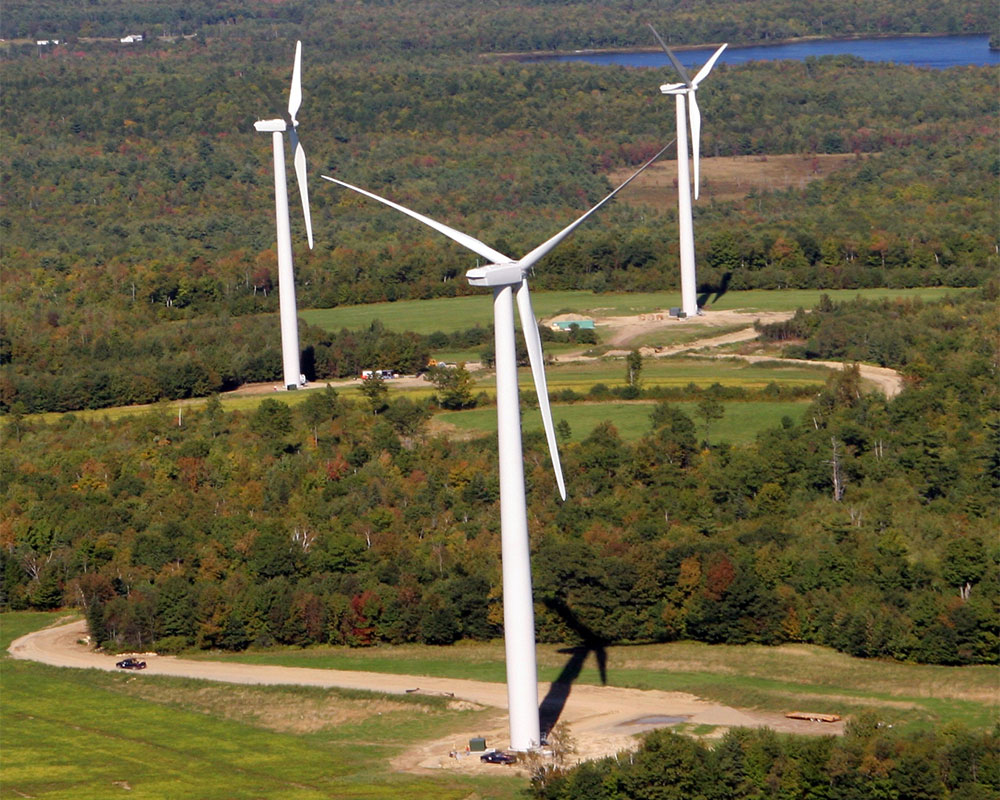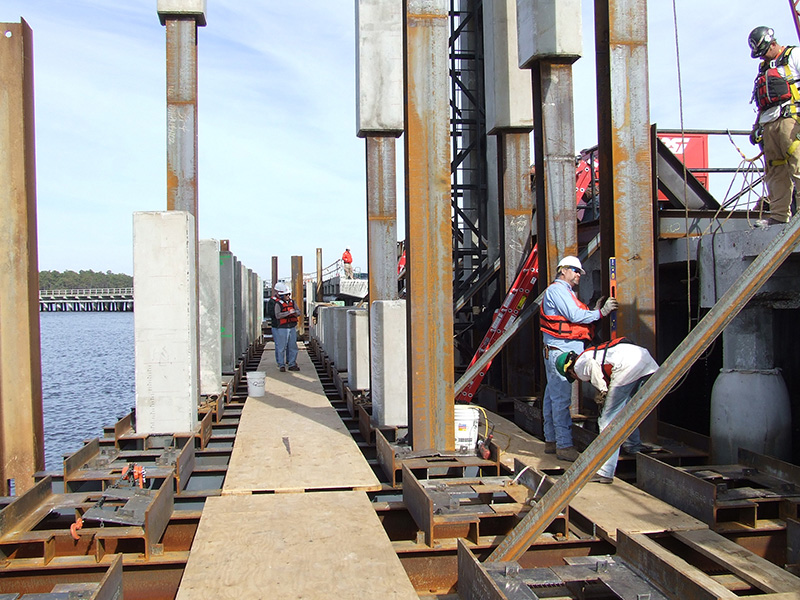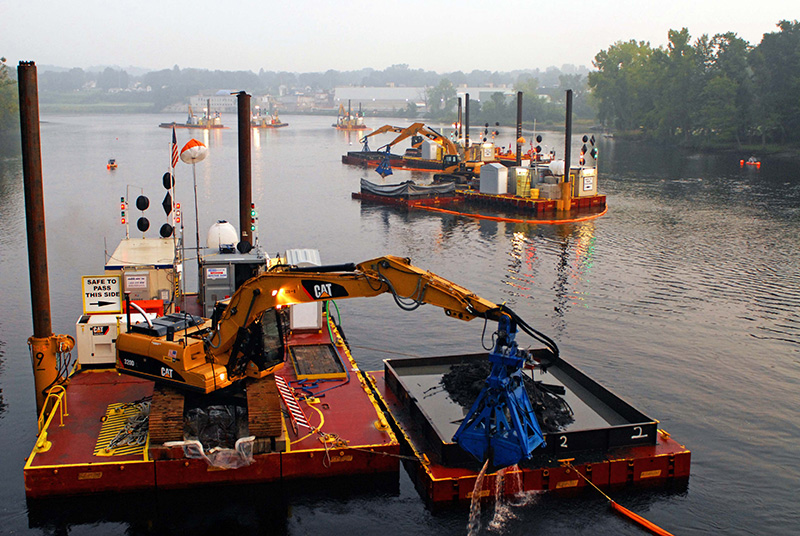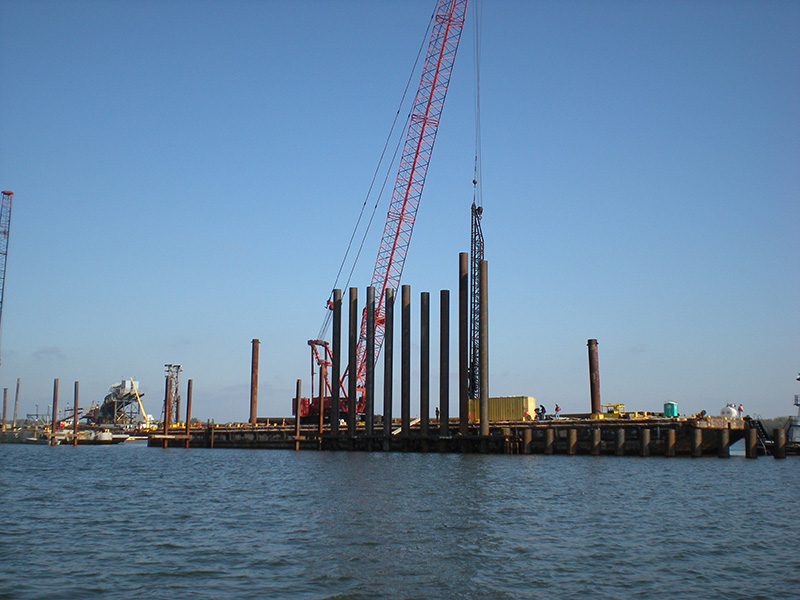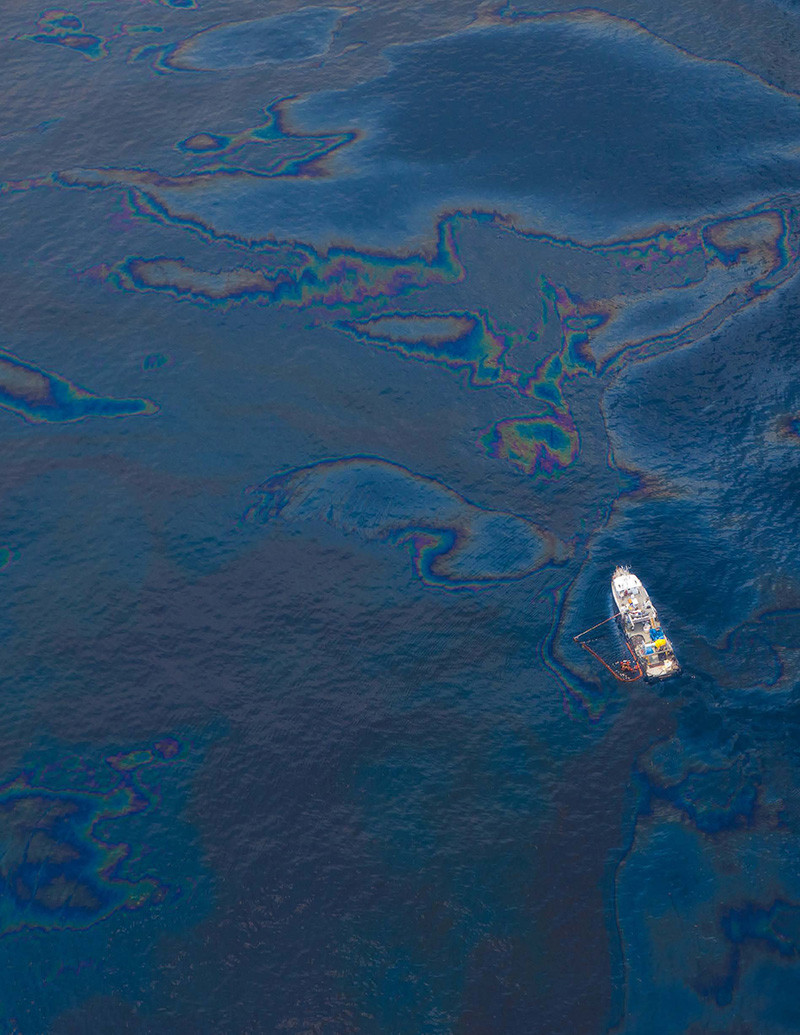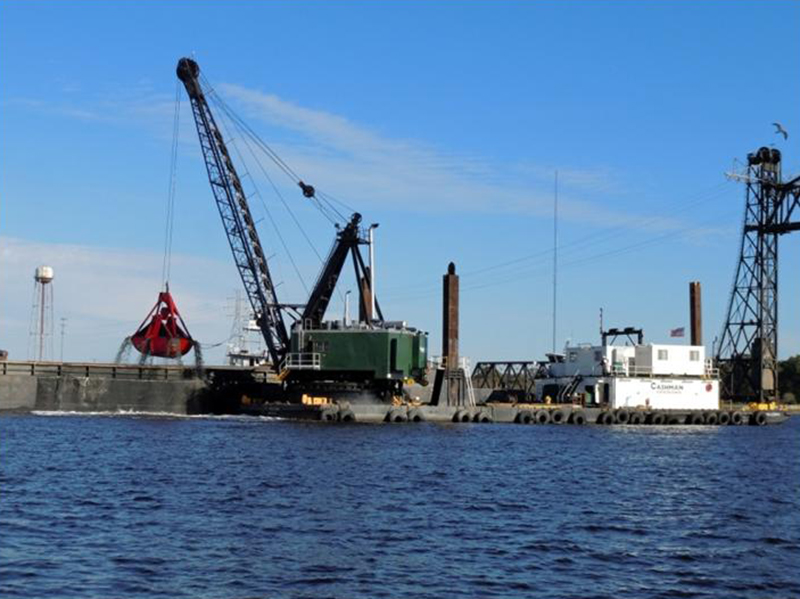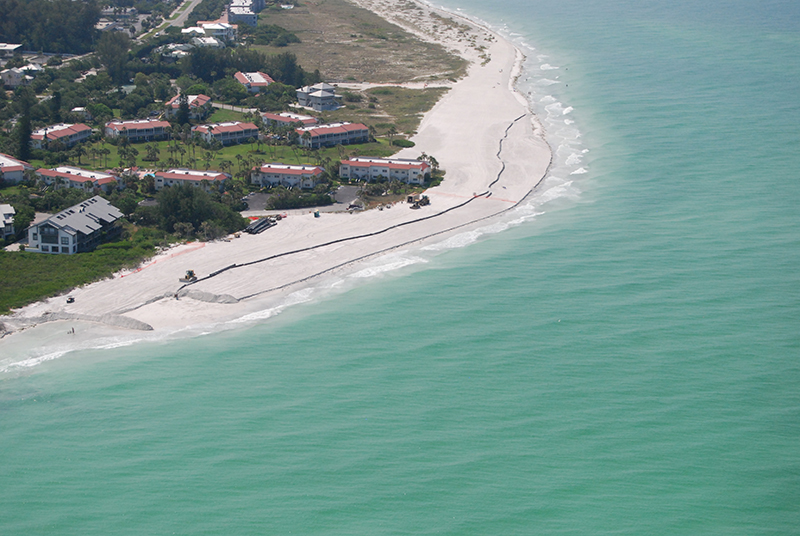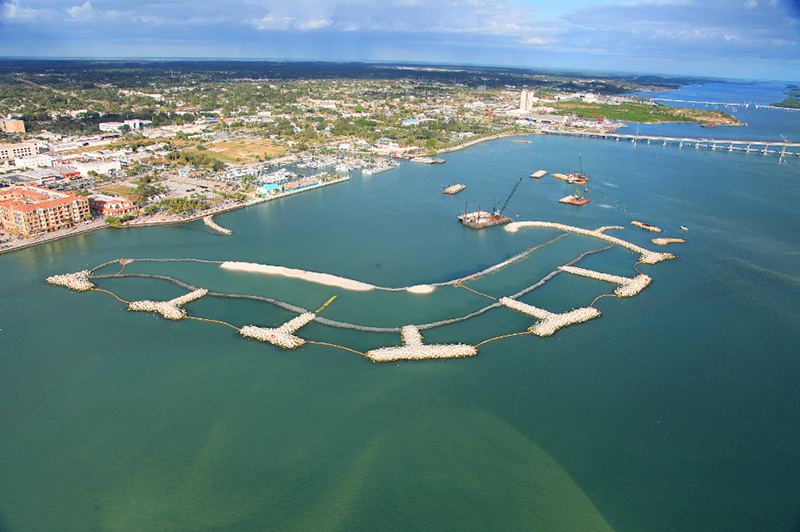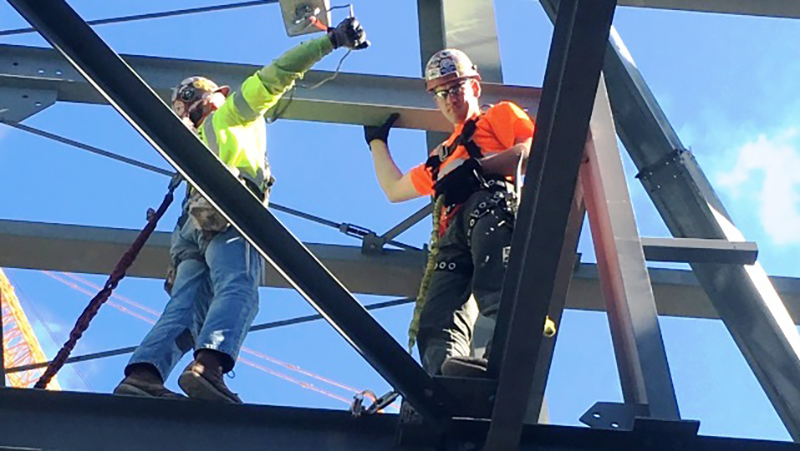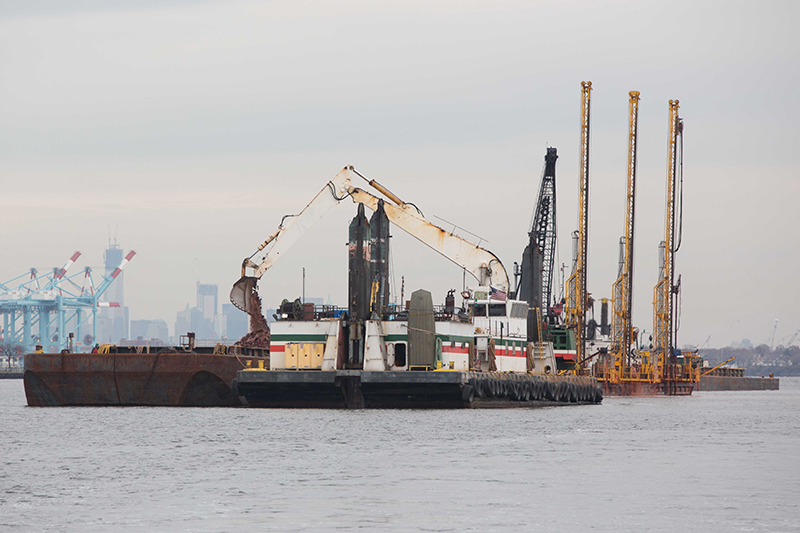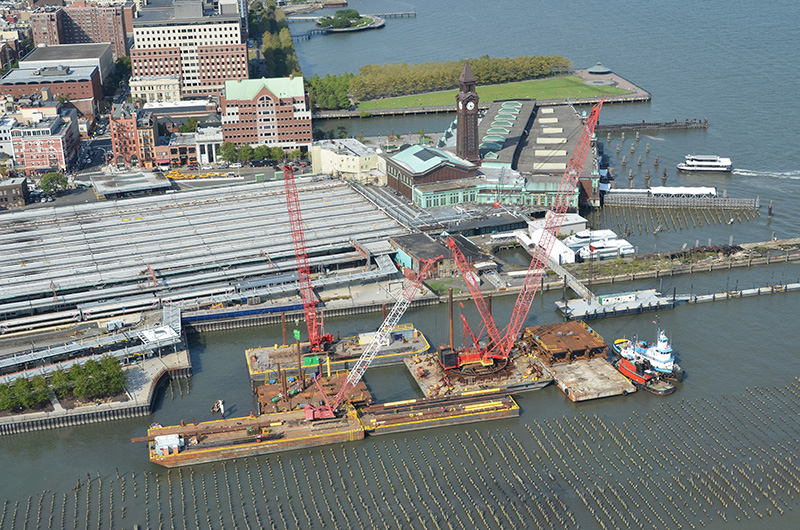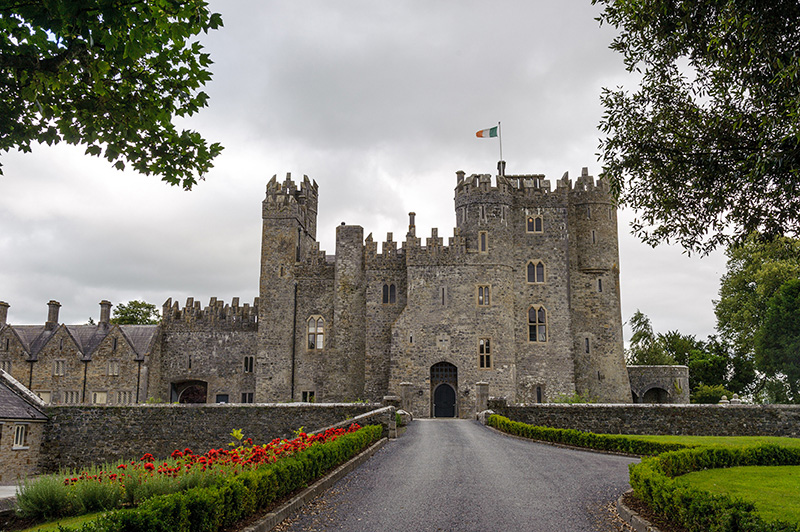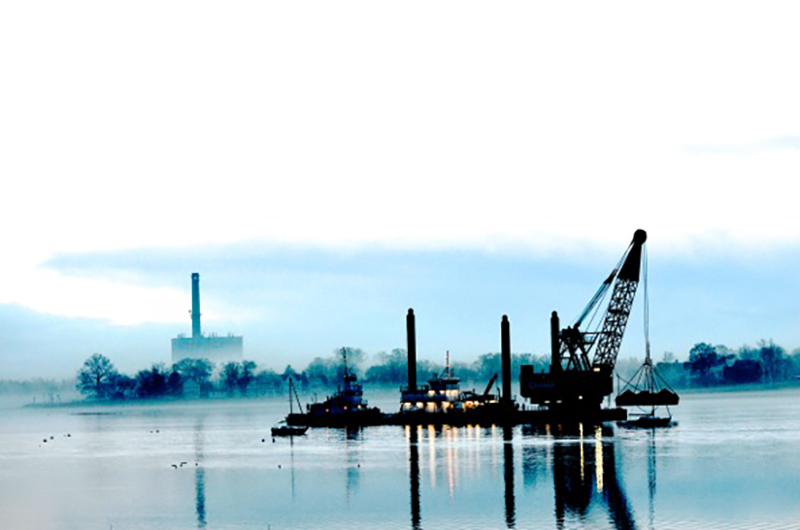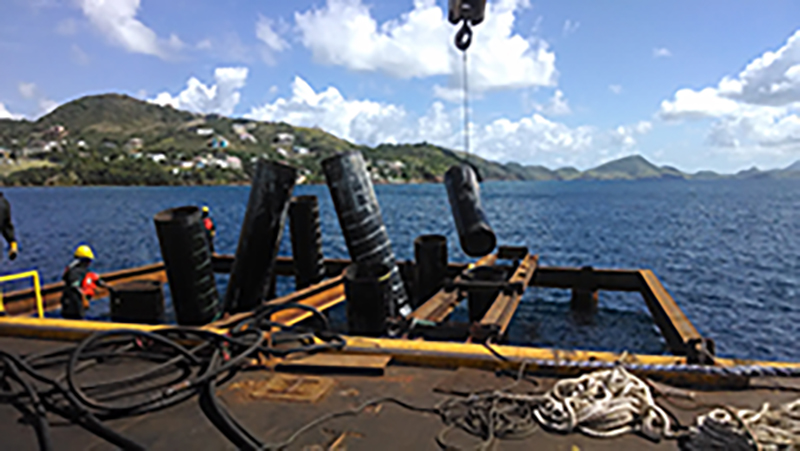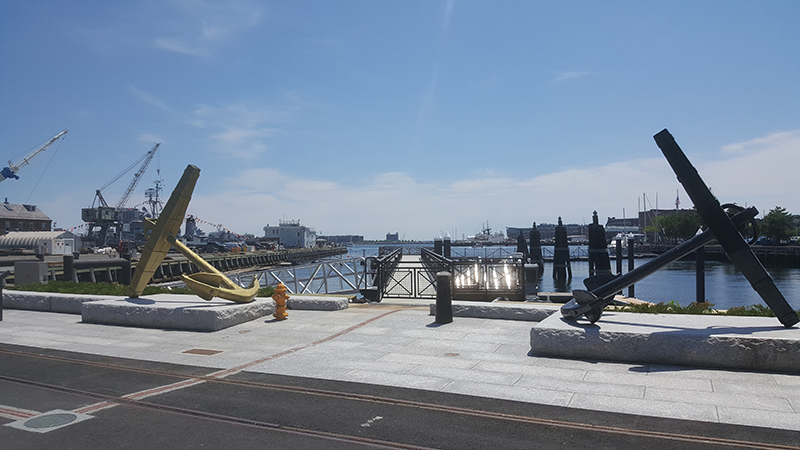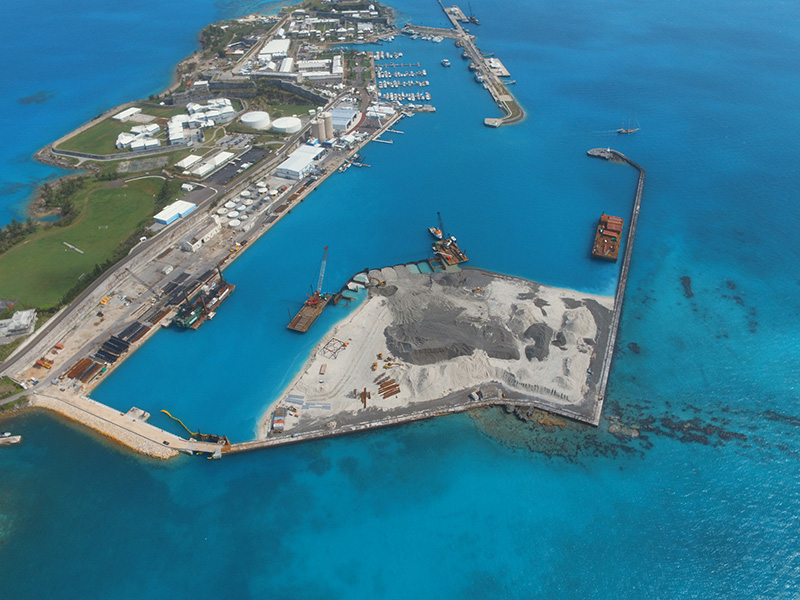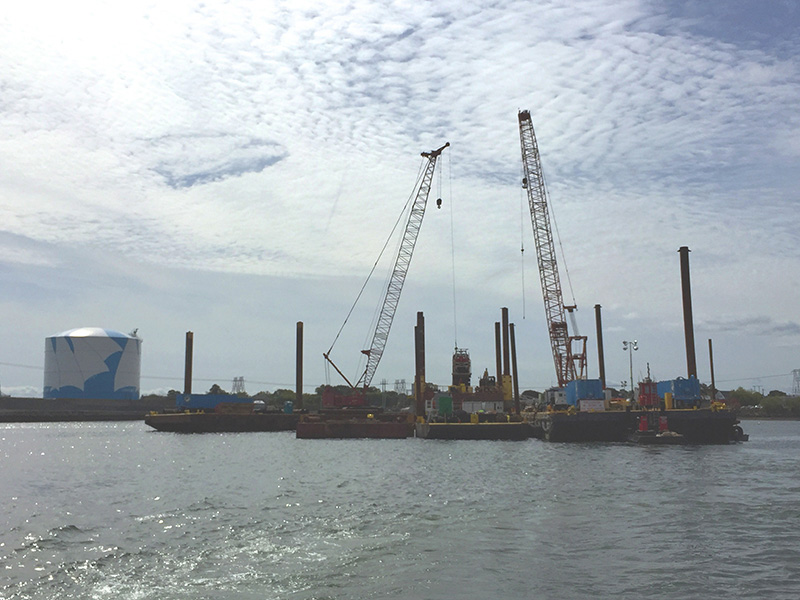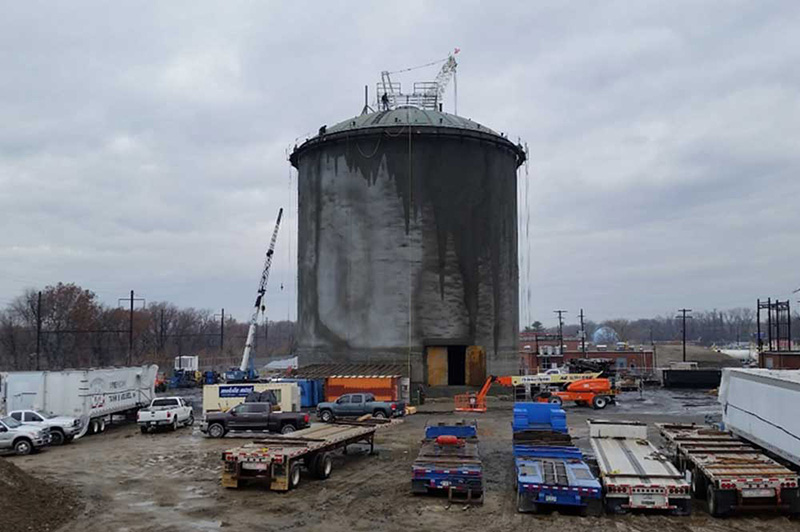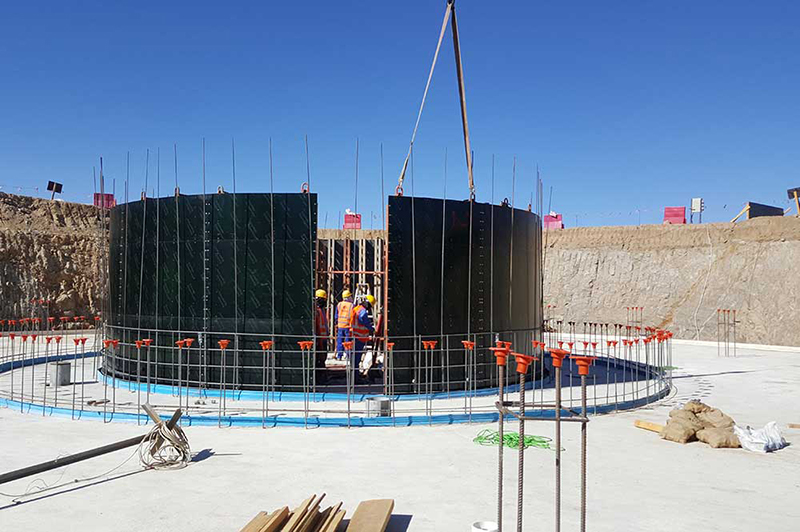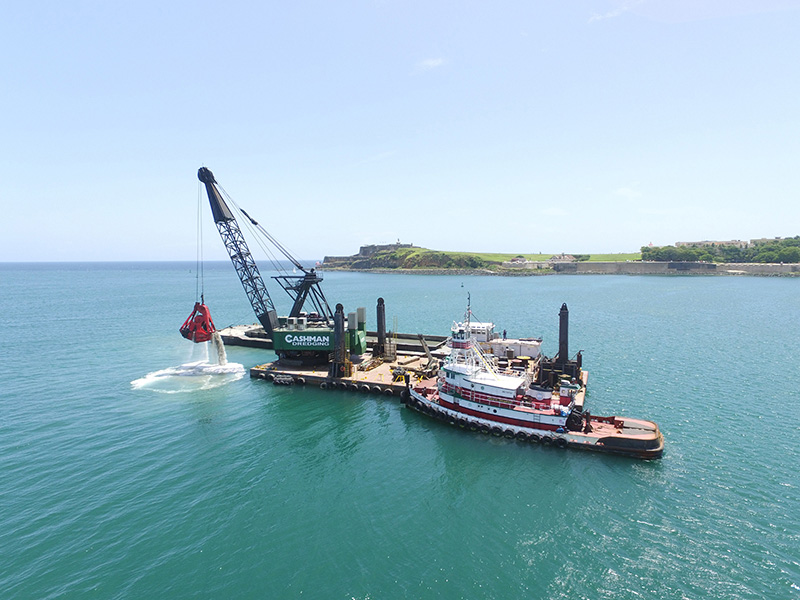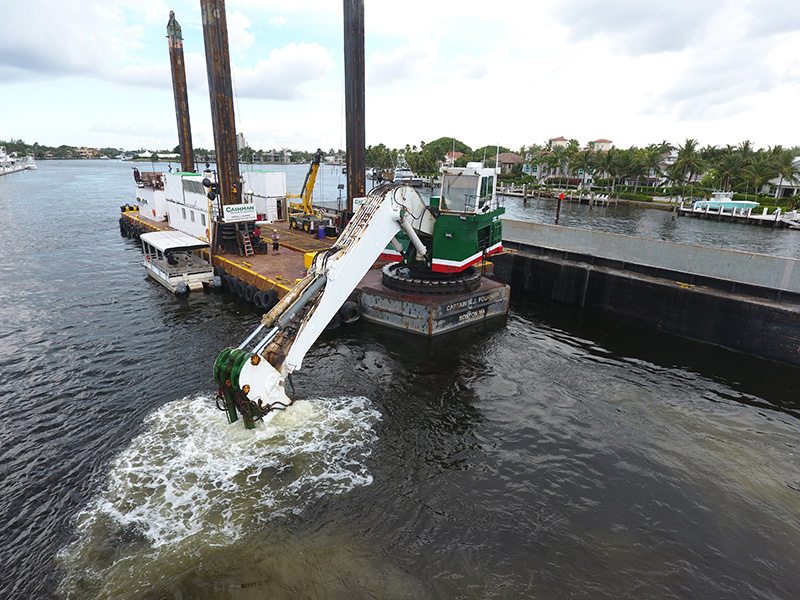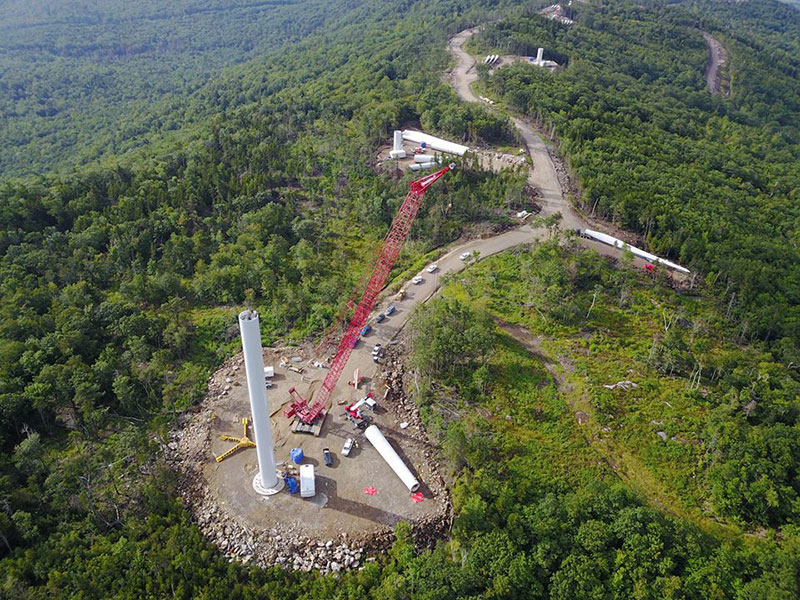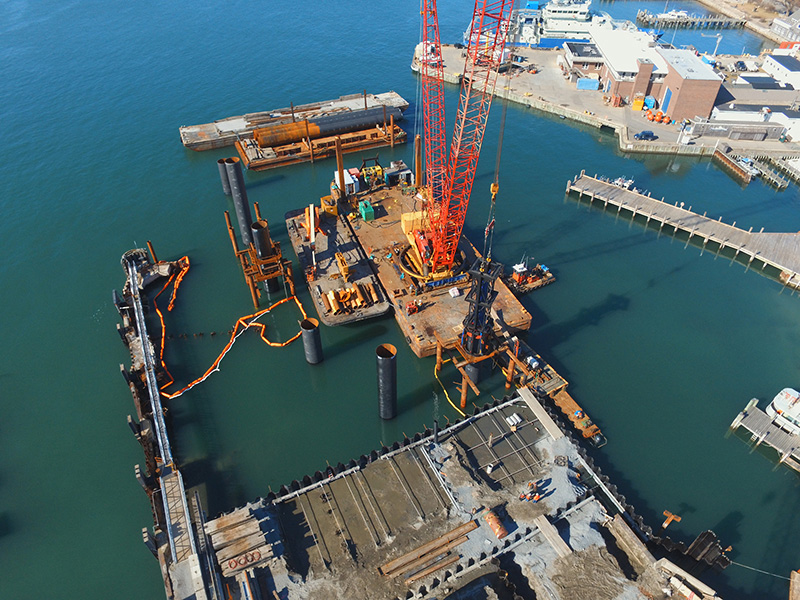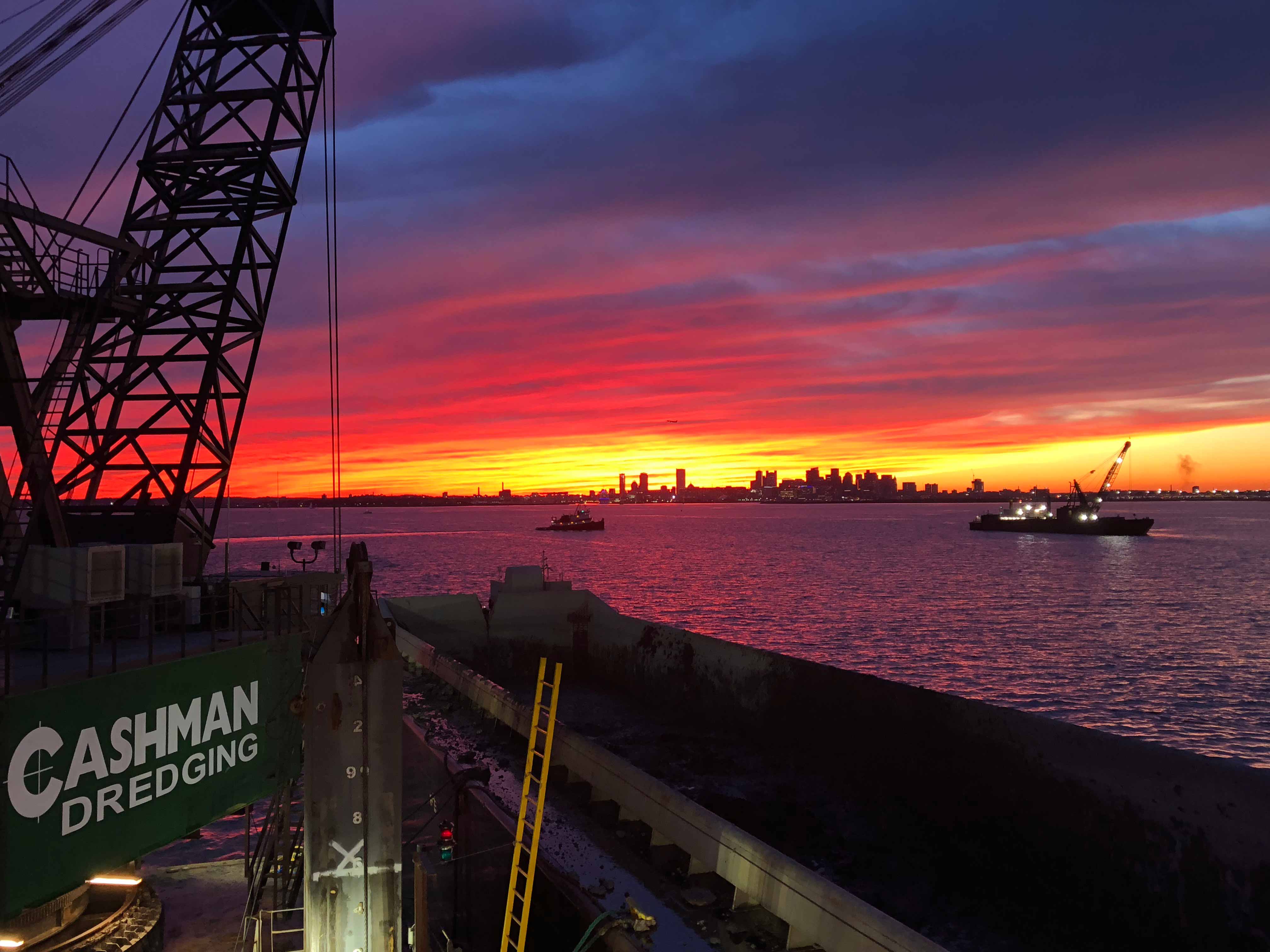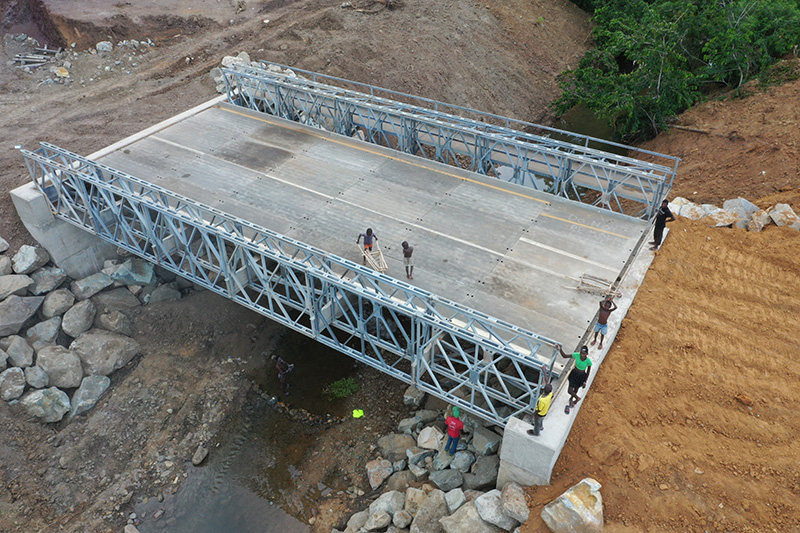‘‘
CASHMAN is not a family business that has been around for generations. It all began in 1965 when my brother Jamie and I started a snow removal company. We were two teenage boys armed only with shovels and determination. Snow removal evolved into rubbish removal and masonry, and since then, I’ve never looked back.
’’
Founder & Chairman of the Board
1965 - TODAY
J.M. Cashman Inc.: Federal Contractors:
In 1974, Jay M. Cashman, a junior at Boston University, incorporated J. M. Cashman, Inc. and operated it out of a modest office on Copeland Street in Quincy, MA, next door to the triple decker where he rented a floor. Jamie Cashman joined the firm when he graduated from college in 1977. When the Blizzard of ‘78 hit Massachusetts, the brothers were ideally positioned to win federal contracts to repair seawalls and piers damaged by the historic storm – precisely the sort of work they specialized in. This shingle hung outside the office building and was hand painted by Linda Cashman, his wife until 1985.
J.M. Cashman, Inc.: Parks & Recreation Work:
In the mid-1970s, Jay and Jamie developed the Highland Park "Survival Garden," a project that allowed the senior citizens of Roxbury's Highland Park neighborhood to plant summer vegetable gardens on vacant city property.
J.M. Cashman Inc.: Major State Contractors:
The construction yard of J. M. Cashman, Inc. was moved to Bridge Street in North Weymouth. During that time, the company, which was run out of a trailer, had over $25 million in contracts with the Commonwealth. J.M. Cashman Inc. repaired bridges and waterfront facilities, and participated in some of the largest construction projects in Massachusetts, including the Third Harbor Tunnel and Massachusetts Water Resource Authority Treatment Plant at Deer Island.
J.M. Cashman's First Crane & Tugboat:
In 1977, J.M. Cashman purchased their first crane and barge to complete their work on the Galen Street Bridge. The crane was a 1954 Koehring 405 Crawler. From 1977 to 1979, the company rented a tugboat for their work until they purchased the “Big Whizzer”. Cashman purchased the tugboat, built in 1963 by J.F. White, in 1979.
Galen Street Bridge Rehabilitation:
The Galen Street Bridge is a five-lane traffic bridge over the Charles River in Watertown, MA, that carries MA State Route 16 and Galen Street. It was built in 1907 by Stuart & Son of Newton, MA, from granite obtained at Deer Isle, Maine, by Patrick Maguire of Milton. In 1977, as their first marine job, J. M. Cashman Inc. rehabilitated the bridge by underpinning the foundations as they were scoured
Greater Brewster Island Pier Construction:
In 1977, J. M. Cashman Inc. built a pier on Great Brewster, an 18-acre island situated 9 miles from downtown Boston in the Boston Harbor Islands National Recreation Area.
The Blizzard of 1978:
J.M. Cashman Inc.’s first large-scale job was the repair of the Scituate seawall. The Blizzard of ’78 wreaked havoc across the Massachusetts shoreline and the 76-year-old seawall that protected the Scituate community could not handle the immense waves that hurled boulders into the wall. Because of the extensive damage, Scituate was designated one of eight federal disaster communities in Massachusetts. J.M. Cashman was awarded the contract to restore three portions of the wall throughout the town. In the First Cliff section, Cashman removed the remnants of an old wall and built a new one. At Sand Hills, a new concrete face was added to the existing wall, while crack-sealing and guniting took place at Humarock. By coincidence, this was the same seawall that Jay and Jamie Cashman’s great-grandfather had built, almost 80 years prior.
Click here to learn more about the Cashman family connection to seawall repair.
Rebuilding The Back Bay Fens' Bridges:
Established in 1887, the Back Bay Fens contains ~100 acres of land for public use. The land is entirely man-made, including a meandering stream, lawns, shaded walks, a rose garden, private garden plots and an athletic field. The spine of the Fens is a stream, which is crossed at six points by bridges. In 1979, J.M. Cashman was contracted to rebuild three out of the six bridges. This was Cashman's first bridge construction project, replacing the existing bridges that were deteriorating and deemed unsafe for pedestrian use.
Vineyard Haven Pier Reconstruction:
In 1980, CASHMAN was awarded the contract to repair the pier in Vineyard Haven by the Martha’s Vineyard Steamship Authority. The project entailed reconstructing while maintaining the existing pier, transferring the bridge and dolphins, and constructing and maintaining a reserve slip with a transfer bridge, dolphins and dredging for the Vineyard Haven Terminal in Tisbury, MA. The reconstruction of the facility was designed to serve the residents of more than one town, providing facilities for transportation to and from Martha's Vineyard.
In March of 1980, a ship crashed into submerged rocks and then into the outer dolphins of the Oak Bluffs slip, causing further serious damage to the boat and the pier. The Steamship Authority hired CASHMAN to restore the Oak Bluff Wharf facility to usable condition.
This project was CASHMAN'S first large-scale multi-million-dollar pier job. The company earned recognition as a major marine construction company after the completion of the complex project.
Thirty seven years later in December 2017, CASHMAN was awarded the Woods Hole Terminal Reconstruction Project by the Steamship Authority.
World Airways Plane Crash Recovery at Logan Airport:
In January of 1982, a World Airways DC-10 aircraft touched down but was unable to stop on the ice-covered runway at Logan Airport. The plane, carrying 212 people, skidded in the freezing cold, shallow waters at the edge of Boston Harbor. Only 210 of the passengers and crew aboard survived.
The nose of the plane split off from the body and sank deeper into the Harbor. Cashman was hired to recover the plane from Boston Harbor. Using their cranes and barges, Cashman pulled the body out of the drink and pulled the plane’s nose out of the harbor.
Leasing of the Bethlehem Shipyard, East Boston:
In 1853 James E. Simpson purchased the site on Marginal Street and began to construct a wooden dry dock, adding a second timber dry dock in 1855. Two steam pumps were arranged so that they could pump from either or both docks, and by 1874 a third dry dock had been constructed. During its operation, the yard repaired war ships that were damaged in Civil War battles and in World War I. In 1922 the Simpson Dry Dock Company was purchased by the Bethlehem Shipbuilding Corporation, the owners of the Fore River Shipyard in Quincy. Bethlehem operated the former Simpson yard during World War II and continued to own it until 1982. After a decline in the shipbuilding industry, it was acquired by Massport in 1985. In 1987, Cashman Marine Enterprises, a subsidiary of J.M. Cashman, Inc., acquired a 38-year lease for the historic 36-acre shipyard in East Boston, the only remaining shipyard in the area, where part of the shipyard was reopened for repairs and shipbuilding. Cashman Marine Enterprises successfully employed over 100 people over a ten year span During that lease, the property was also redeveloped into a recreational and industrial space.
Burroughs Wharf Redevelopment Project:
Burroughs Wharf is built on the site of the once derelict Lincoln Wharf "Coal Pocket." After some 100 years as a general wharf and as a dock for ships, Lincoln Wharf was selected as the site for a coal-fired electric power plant, needed for the new Boston Street Railway. Lincoln Power Station, built on tidal fill and supported by 1,200 wooden pilings, went into operation in 1901. A large shed at water’s edge stored coal brought in by ship. The power plant operated until the mid-1970s. In the 1980s, developers acquired the building from the Massachusetts Bay Transportation Authority, to convert it into a condominium building. The development project involved extensive demolition of existing steel structure, coal bins, and electrical generation equipment. CASHMAN installed more than two hundred 150-ton piles into bedrock to replace the pier’s 1,200 wooden piles that had been eaten away by marine animals. The piles were successfully driven within 10 feet of either side of the Callahan and Sumner Tunnels into Boston Harbor, with no interruption to traffic.
In addition to luxury housing, Burroughs Wharf houses the Boston Fire Department’s Marine Unit, accommodates a water taxi stop, small boat tie-up area, a 15-slip marina and over an acre of open space providing public access to the waterfront. This project entailed the construction of two new piers and building a 108-space underwater parking garage. This project, like many in the North End, was historic: it was America's first conversion of a power plant into residential buildings. Coal pockets have a history within the Cashman family. Over 60 years prior to this project, Jay M. Cashman’s paternal grandfather ran a successful coal business out of Quincy, MA.
Click here to learn more about the Cashman family coal connection.
Deer Island Revitalization Projects:
Deer Island was once occupied by a military fortification during the earlier parts of the 20th centuries. Fort Dawes guarded the harbor from Deer Island, and was the largest of the Boston Harbor military forts, which was logical given Deer Island’s long north-to-south exposure near the Harbor’s entrance. Deer Island has also been used in the past as a prison, quarantine station, and a sewage treatment plant.
From 1991 to 2000, CASHMAN was hired to revitalize and rebuild Deer Island. Fort Dawes and the island grounds, including a glacial drumlin, were blown up, dug out, bulldozed, and barged away in order for the Massachusetts Water Resources Authority (MWRA) to build the world's second largest sewage treatment plant. CASHMAN demolished 100,000 cubic yards of concrete along with extensive timber pile excavation and removed over 5 million cubic yards of materials. Over 12,000 pounds of explosives were detonated in one controlled blast during demolition of the island’s military bunkers. CASHMAN also built the marine infrastructure and facilities including piers, transfer bridges, and a personal shuttle float. The company also established a secured landfill on the southern section of the island.
Today, Deer Island is home to a Harbor landmark, the Waste Water Treatment Plant, public boat docks, and a National Recreation Park. There are hiking and biking trails that provide views of Boston Harbor.
Construction of the Joseph T. Carr Bridge, Connecticut:
Built by J.M. Cashman, Inc. in 1992, the Joseph T. Carr bridge, located in New Haven, CT, is a box girder type swing bridge that carries Chapel Street over the Mill River. The bridge includes a control house above the roadway at the center of the span which contains the electrical controls for the bridge and part of the turning machinery. The rest of the machinery is mounted below deck.
Incorporation of Sterling Equipment:
Sterling Equipment Inc., an East Coast rental company incorporated in 1995, provides equipment rentals to the construction industry. They have specialized in marine equipment for over 20 years and continue to fill the changing needs of their customers by constantly updating and expanding their heavy civil and marine rental divisions.
Sterling provides cranes, excavators, and buckets through its Heavy Division and barges, dredges, scows and tugs through its Marine Division. The equipment is not only in top-notch condition, but it is provided at reasonable rates and from various locations up and down the Eastern Seaboard.
As a member of the CASHMAN Family of Companies, Sterling Equipment, Inc. owns and maintains a fleet of over 100 pieces of specialized equipment, allowing CASHMAN to act as a single-source provider on complex marine and heavy civil projects that would otherwise require multiple subcontractors.
Fort Point Channel, The Largest Deep Soil Mixing Project:
East of the jacked tunnels of the South Bay Interchange, huge amounts of remediation and reclamation were needed to allow construction of Ramp D, the cut-and-cover tunnel link that carries I-90 on to the immersed tube tunnels of the Fort Point Channel crossing. Soil mixing was chosen as the most cost-effective way of stabilizing the waterlogged ground and to reclaim some of the channel beyond the existing harbor wall.
As one of the largest U.S. installations of deep soil mixing, several unique and innovative construction methods were adapted to meet the site’s particular conditions. The remediation was needed to stabilize deep soft clay deposit in order to continue the construction of the tunnels. Through a 700-ft.-long area, the deep soil mixing was used to unprecedented depths of 100 to 130 feet to restrain about 50 feet of unbalanced lateral loads from adjacent land and to serve as the permanent foundation for the tunnels. Further south, at a shallower part of the tunnel, a 40-ft.-deep barrier of soil-cement was formed on one side of the tunnel to laterally restrain a 1000-ft.-long section of tunnel. This allowed for excavation of the cut-and-cover tunnels while protecting adjacent structures including the US Postal Service building and the Gillette Headquarters.
“The largest soil mixing project ever undertaken, worldwide… a watershed in U.S. geotechnical engineering.” –Civil Engineering Magazine
Construction of I-90 and Route 146 Interchange:
While a majority of expansion construction for the Massachusetts Turnpike focused on the easternmost portion of the highway, in Millbury the Turnpike Authority was adding a new interchange with Route 146, connecting the newly constructed route with the MassPike. The new interchange accommodates traffic movement from the MassPike to Worcester and through the Blackstone Valley to Providence, Rhode Island. Work by CASHMAN began in 1996, and included the demolition of the three existing bridges. CASHMAN constructed four miles of new roadways and ramps, including four new bridges. In addition to construction, CASHMAN also relocated existing roadway, wetlands, and utilities.
Spectacle Island Revitalization:
Spectacle Island once housed a quarantine hospital, a horse rendering facility, and a grease reclamation plant. For more than 50 years the island was used as dumping ground for the City of Boston's trash. Today, the island is a public park, forming part of the Boston Harbor Islands National Recreation Area.
When the Central Artery/Tunnel (CA/T) Project began in Boston in 1992, some of the project's excavated dirt and clay was used to resurface the island. The island was covered and built up by dirt, capped with two feet of clay, and covered with 2-5 feet of topsoil. Thousands of trees were planted, and paths, buildings, and a dock were built. The major marine / material placement contract associated with Boston's CA/T Project was cited by ENR Magazine as being among the "Best Projects of 1999."
“Only two years ago it was nothing more than a mountain of garbage in the middle of Boston Harbor, leaking thousands of gallons of toxic material into the surrounding water.” –Peter Zuk, former CA/T Project Director
Central Artery Tunnel Project:
In 1991, after almost a decade of planning, construction began on Boston's Central Artery / Tunnel (CA/T) Project, in order to remove an elevated highway and create a tunnel system below the city. This tunnel replaced the 6-lane elevated highway built in the 1950s and connects several crucial areas and highways in the city. Recognized as the largest, most complex, and technologically challenging highway project in the history of the United States, the CA/T Project significantly reduced traffic congestion and improved mobility in one of America's oldest and most congested major cities. The work was performed beneath the major metropolitan City of Boston and was carefully planned so as to not disturb daily activities.
CASHMAN completed several Contracts on this Project, including the construction of the Chardon Street to Charles River link of I-93 in Boston which required building three highway tunnels (two-to-four lanes wide each) directly below the existing elevated highway. The CASHMAN team supported the existing structure with major underpinners at 19 highway bents on the (CA/T) Contract for the "Big Dig" in downtown Boston. While maintaining existing daily traffic of over 180,000 vehicles overhead, the CASHMAN team installed about 420,000 SF of slurry wall and about 2,000 LF of multi-barrel tunnel. Slurry walls, invented in the 1940s to hold back water and earth during underground construction, were generally removed or abandoned after a project was complete. Using them as permanent walls of a tunnel was a fairly radical idea. In fact, no major highway tunnels in the United States were built that way before the Big Dig. But the Big Dig took the concept to an entirely new level. It was to become the single largest use of slurry walls in the United States, with some of the walls extending more than 12 stories underground. As part of the project's Underground Utility Relocation Program that took place from 1996-1997, CASHMAN was also responsible for the relocation of three miles of utility lines (gas, sewer, and water mains) in Boston and Charlestown.
East Boston Boatyard Purchase:
In 1999, Jay M. Cashman purchased the East Boston Boatyard between Nay and Condor Streets in East Boston – not knowing until he reviewed the closing documents, that the property had once been owned by his great-granduncle, John Cashman, and was the home of John’s dredging company, Bay State Dredging. After Jay's purchase, the East Boston boatyard served as the Sterling Equipment headquarters. Catering to the Boston Harbor, Sterling ran its barge rental company out of the yard and housed a repair shop to work on equipment that was run down, damaged or needed updating. The boatyard was also the center for mobilization and demobilization for many projects in the Boston Harbor. In 2015, Jay sold the boatyard to the Capitol Waste Company.
Click here to learn more about the Cashman family connection to the East Boston Boatyard.
Outfall Tunnel Ventilation System in Boston Harbor:
CASHMAN was part of the team responsible for the historic changes in secondary sewage treatment that helped clean up Boston Harbor. It was a major undertaking to clean up the nation’s dirtiest harbor, one that would cost multiple billions of dollars and take years of engineering investment and implementation.
The effluent outfall for the Deer Island Treatment Plant was an important part of the MWRA's wastewater management program. This outfall, which started up in September of 2000, discharges treated sewage (effluent) through 55 diffusers, into Massachusetts Bay instead of the Harbor, which has helped the Harbor's recovery. The outfall begins at Deer Island with a deep rock tunnel extending under Massachusetts Bay to a point about 9.5 miles east of the island. The outfall site was chosen after considerable scientific and technical study and extensive public participation.
Because of a tragic accident involving divers hired to unplug the diffusers, CASHMAN engineers developed an innovative method to permit construction of the Tunnel’s final connection. CASHMAN re-mobilized its deep-water jack-up barge used on the initial MWRA Outfall Diffusers contract to provide the final connections to the Outfall Tunnel using an innovative ventilation pipe system. The project was completed 11 months ahead of schedule as well as tens of millions of dollars under budget. In 2001, CASHMAN received the prestigious NOVA Award for "Innovation in Construction" from the Construction Innovation Forum.
Greenbush Commuter Line Rehabilitation:
The Greenbush Line is a branch of the MBTA Commuter Rail system, which serves the South Shore region of Massachusetts. The 27.6-mile line runs from downtown Boston through the towns of Braintree, Weymouth, Hingham, Cohasset, and Scituate to the Greenbush neighborhood in southern Scituate. CASHMAN was part of the Design-Build team that performed design and construction of the rehabilitation of 18 miles of track and signals through five towns and extensive wetland environments. This span of track included two cut-and-cover tunnel sections, ten railroad and eight highway bridges (including substructure and superstructure replacement), and 26 at-grade crossings. The team also constructed seven new MBTA stations including platforms and parking, a new state-of-the-art signal and communication system, and a layover facility. CASHMAN also implemented a community outreach program that won an ARTBA Pride Award for First Place in Community Relations in 2006. Now called Community Development Solutions, the program is still an active part of the company's platform when dealing with local communities. After this project was completed, modern passenger service on the Greenbush Line began on October 31, 2007.
One of the train trestles on the Greenbush line was built by John Cashman, Jay M. Cashman's great-granduncle, for the Old Colony Railroad and was replaced by Jay M. Cashman 100 years later.
Click here to learn more about the Cashman family connection to Greenbush.
Formation of Cashman Dredging and Marine Contracting Company, LLC:
In 2003, CASHMAN DREDGING & MARINE CONTRACTING COMPANY, LLC, a member of the CASHMAN Family of Companies, was formed to focus more closely on the dredging industry. Over the last decade, CASHMAN DREDGING has emerged as an industry pacemaker in navigational and maintenance dredging projects. CASHMAN DREDGING provides deeper and cleaner waterways through innovative dredging, capping, and processing techniques developed for major East and Gulf Coast / Caribbean customers.
CASHMAN DREDGING has undertaken some of the largest dredging projects in U.S. history. Providing an array of integrated solutions ranging from environmental and navigational dredging to pond and industrial dredging, CASHMAN DREDGING has earned a reputation for precision and quality.
To learn more, visit: www.CashmanDredging.com
Click here to learn more about the Cashman family connection to dredging.
Algonquin Gas & Transmission Hubline:
The Algonquin Gas Transmission is a 1,100 miles long pipeline system, which delivers natural gas to New England. CASHMAN was part of the team that installed a 29-mile underwater gas and transmission line from Beverly to Quincy, Massachusetts. CASHMAN'S team designed, furnished, and installed a critical cofferdam in Beverly Harbor to connect a portion of the gas main installed by shallow rock boring with the cut & cover main. This connection was made with the rock at or near the surface of the seabed and required an innovative approach to design and construction.
Kill Van Kull Channel Deepening:
The U.S. Army Corps of Engineers (USACE) along with Port Authority of NYNJ (PANYNJ) hired CASHMAN to deepen the Kill Van Kull Channel. During the dredging project in Newark Bay and South Elizabeth Channels, the team encountered an unexpected deposit consisting of diabase rock, limestone, and shale. CASHMAN was faced with the challenge of rock removal in an area congested with marine traffic. The USACE recognized the logistical problems and safety issues involved with blasting at this location, and requested that CASHMAN develop an alternative to drilling and blasting, which was ruled out due to noise, safety, and closures issues as well as the fact that drill and blast rigs would be too slow to move out of the way of ship traffic. CASHMAN turned to a tool never before used for underwater rock breaking in North America, an IHC hydrohammer- Model s90.
Environmentally safer than traditional drill and blast methods, the s90’s main advantage is its maneuverability. CASHMAN retrofitted the dredge S. Comoletti with the hydrohammer to remove the rock from May to August of 2004. The rock was in an area with a high volume of boat traffic every day, and CASHMAN used the hydrohammer to avoid affecting nearby terminals. Drilling and blasting would have closed the area to boats for the duration of the project. The 37-ft., 14-ton hydrohammer can break rock at depths of 65 feet, and can operate at any angle from 55 to 90 degrees. Unlike conventional diesel- and air-powered hammers, the self-contained hydraulically operated s90 is quiet and can operate underwater without loss of energy and with no risk of releasing harmful pollutants into the environment. The project deepened the channels to 45 feet with 1.5 feet of overdepth, in approximately one mile of 1,000-ft-wide navigation channels.
Oversight of Modern Continental for the Central Artery Tunnel Project:
In 2004, St. Paul, one of the world's largest Surety companies enlisted the help of Jay M. Cashman and his team of industry experts to take over more than $1 Billion of construction projects underway with struggling high-profile contractor, Modern Continental. This included Boston’s Central Artery Tunnel project (“the Big Dig”), the largest infrastructure project in the Nation. Modern was the largest contractor on the massive project charged with converting the overhead interstate highway into a fully integrated tunneling system under the active city streets and waterways. Cashman stepped into the dual role, serving as both a Chief Executive Officer and trusted surety consultant. The CASHMAN team oversaw the successful completion of the construction work in jeopardy and wrapped up all of Modern’s remaining work alongside some of the Modern Continental employees who became part of the CASHMAN team and remain with CASHMAN today. At the time of the project’s completion in 2009, CASHMAN became a leading provider in heavy civil and marine construction services.
Purchase of Quincy Shipyard:
The Fore River Shipyard, now known as the Quincy Shipyard, has had many uses since its operations began in 1883, including shipbuilding (both military and civilian), docking stations, a staging area for the Deer Island project, and a port for commuter boats. The Shipyard was held by the MWRA until the early 2000s when it purchased by CASHMAN in three phases. In 2004, the first 11 acres was acquired and is now home to Sterling Equipment’s facilities. The area that holds the CASHMAN office and the building leased to General Dynamics and the New England Aquarium, was purchased around 2008. The final piece by the rotary leading to the Fore River Bridge was purchased in 2015.
Founding of Preload International:
Preload International, a member of the CASHMAN Family of Companies, has developed a creative and innovative approach to the research, development, design, and construction of prestressed, precast, sliding base concrete tanks. Preload International is the pioneer of prestressed concrete tank design. Wire-wound, prestressed concrete tanks are the ideal storage solution for water, storm water, wastewater treatment, biofuels, and thermal energy storage. Preload Middle East, part of Preload International, designs and constructs tanks for large- and small-scale storage tanks outside of the United States and is based in Boston and Doha, Qatar.
Preload’s precast, concrete storage tanks have been operating reliably around the world for more than 50 years. These tanks perform as well as conventional tanks and offer a unique cost- and schedule-effective alternative. Precast concrete tanks provide single-, double- and full-containment storage (as well as membrane storage) for refrigerated and cryogenic liquids, such as LNG, liquid oxygen, liquefied petroleum gas, ethylene, ammonia, etc., for a wide range of storage volumes — 2,000 to 300,000 cubic meters.
To learn more, visit: www.PreloadInternational.com
Cooper River Bridges Demolition:
CASHMAN partnered with Testa to demolish two bridges that crossed the Cooper River in Charleston, SC. After the opening of the Ravenal Bridge in 2005, the Grace and Pearman bridges were set to be demolished. By the 1990s, both bridges had become unsafe, as the Grace was built in the 1920s and the Pearman was built in the 1960s. The Grace bridge was entirely unusable and the Pearman could barely handle the influx of traffic. In addition to removing the two bridges, CASHMAN and Testa also constructed an observation pier and reconstructed the surrounding city streets.
Mass. Maritime Wind Turbine Construction:
Solar Design Associates, teamed with Cape Wind, Energy Management, and Jay Cashman, Inc. to design, engineer and install the first state-owned wind turbine in Massachusetts. It was CASHMAN's first wind turbine construction project. The project is owned and operated by the Massachusetts Maritime Academy (MMA).
With its campus at the western mouth of the Cape Cod Canal, MMA enjoys the abundant endowment of wind resources available along the southeastern Massachusetts coast. Standing 248 feet tall, the MMA Vestas wind turbine has significantly reduced the need to purchase grid power energy by 27%. The turbine produces up to 660 kilowatts per hour and over its lifetime, the turbine will produce more than $7 million worth of electricity for the Academy. In addition to its significant cash contribution, the turbine will also make an important contribution to the Academy's curriculum by serving as a real-time teaching tool for the school's engineering cadets who make up more than 50% of the school's student body. The turbine has been used extensively as an educational tool for students and other professionals interested in renewable energy.
Rose Kennedy Greenway - Wharf District Parks:
In 1991, after almost a decade of planning, construction began on Boston’s Central Artery/Tunnel (CA/T) Project, which removed an elevated highway and created a tunnel system below the city. Community and political leaders seized the opportunity to enhance the city by creating the Greenway, a linear series of parks and gardens that would re-connect some of Boston’s neighborhoods. Four Wharf District Park parcels, positioned in the median strip of Atlantic Avenue, were designed, and constructed as part of the Greenway. The Wharf District Parks connect Faneuil Hall and the Financial District with Boston Harbor and contain paved surfaces areas for active public use and a gathering space for public events. The Parks reflect Boston’s maritime history and include the majestic Rings Fountain, colorful light displays, and interactive sculptures. CASHMAN’s work included park and roadway construction, fountain construction, landscape, and roadside development.
Founding of Patriot Renewables:
Patriot Renewables, a member of the CASHMAN Family of Companies, was founded in 2006. Patriot Renewables, LLC is a developer, owner, and operator of commercial-scale wind energy projects. Patriot currently owns and manages five operating projects. The Patriot team is made up of skilled individuals with proven abilities in project development, renewable energy, and environmental stewardship. Through Patriot Renewables, CASHMAN permitted, built, owns and operates more renewable wind energy than anyone in New England.
To learn more, visit: www.PatriotRenewables.com
Beaver Ridge Wind Farm:
Beaver Ridge Wind’s three General Electric 1.5-MW wind turbines produce ~12 million kilowatt-hours (kWh) of mission-free electricity each year. That is enough to power about 2,000 homes (based on 500 kWh per home per month) and reduces the amount of CO2 emissions by the equivalent of almost 630 thousand gallons of gasoline. Beaver Ridge Wind was only the second wind farm in Maine when it started operating in November of 2008. It was the very first wind farm behind Central Maine Power, the transmission and distribution utility for southern and western Maine. Beaver Ridge Wind is owned and operated as a partnership between Patriot Renewables, LLC and MIRSAP1, LLC. It was built by Eco Industries, LLC, a CASHMAN affiliate. For its first five years of operation, Beaver Ridge Wind operated with a capacity factor of over 31%. This means that the wind plant produced, on average, is 31% of its nameplate capacity, even though the wind does not blow all the time. This number considers energy used by the turbines when the wind is not blowing (parasitic draw).
Center Wharf Expansion, MOTSU:
CASHMAN was contracted to support the expansion of the Center Wharf at the MOTSU, and the upgrade of overall facilities. Improvements to the 2,000-foot center wharf include expanding its width by 20 feet and tearing down the high dock on the waterfront side to accommodate two new 80-foot ship-to-shore container cranes that was installed in 2012. The result of the improvements to Center Wharf increased the speed and volume of ammunition that can be moved through the port, simultaneously reducing the amount of time ammunition ships spend berthed at the port. Ground was broken in October 2008 and stayed on track despite unique challenges. Don Parker, deputy commander of the 596th Transportation Brigade and MOTSU, said, “CASHMAN-Republic has done an outstanding job keeping the project on or ahead of schedule.”
Hudson River Remediation Projects:
CASHMAN DREDGING was instrumental in one of the largest polychlorinated biphenyl (PCB) sediment remediation projects in U.S. history. When the final season was completed for General Electric in 2015, more than 2.75 million cubic yards of sediment from a 40-mile stretch of the upper Hudson River between Fort Edward and Troy, NY had been removed, and 100 percent of the PCBs targeted by the EPA had been addressed. It took "a world-class team of engineers and dredging experts to design and perform the work," which the EPA calls "a historic achievement."
In July 2008, GE awarded CASHMAN DREDGING & MARINE CONTRACTING COMPANY, LLC a contract to perform the first year of dredging. CASHMAN crews worked 24 hours a day, six days a week, for six months, to complete the first phase of work. Ultimately, 288,000 cubic yards of sediment were removed, surpassing the EPA's 2009 target. In June 2011, CASHMAN began the multi-seasoned second phase of work dredging, transporting sediments by barge to the processing facility, and shipping dewatered sediments by rail to disposal facilities. From May through November 2012, CASHMAN removed over 663,000 cubic yards of sediment during the season, almost doubling the EPA's target of 350,000 cubic yards. CASHMAN also constructed a second unloading wharf at the processing facility during the winter 2012 season to accommodate the large volume of dredged materials. During this second phase, dredging techniques and technologies were refined, which enabled industry-leading dredging precision while also increasing dredge productivity across a wide range of varied site conditions, from extremely shallow water to work in front of dams. In 2014, dredging also continued in a two-mile section of river near Fort Miller that is inaccessible by boat. Several logistically challenging areas were dredged in 2015, including those near dams and shallow areas around islands. Backfilling of previously dredged areas with clean material and processing facility operations continued until all dredged sediment was transported offsite. Approximately 250,000 cubic yards of PCB-impacted sediment was targeted for removal in 2015.
Charleston Naval Base Container Terminal:
Charleston Naval Shipyard was a U.S. Navy ship building and repair facility located along the west bank of the Cooper River, in North Charleston, South Carolina and part of Naval Base Charleston. In 2013, Palmetto Railways purchased about 100 acres of the Navy Yard with a plan to run freight trains through the north end of the former base to serve a new container port, Navy Base Intermodal Container Transfer Facility. Between 2009 and 2016, CASHMAN completed two phases of construction & site work in preparation to construct a new port facility on the south end of the former Charleston Naval Base in North Charleston as a portion of the overall This project was part of the overall modernization plan to increase the Port of Charleston capacity by 50 percent.
Deepwater Horizon / BP Oil Spill Clean Up Response:
Following the explosion and sinking of the BP Deepwater Horizon oil rig off the coast of Louisiana, a massive response ensued to protect Gulf Coast beaches, wetlands and estuaries from the spreading oil using skimmer ships, floating booms, controlled burns, and oil dispersant. CASHMAN'S Sterling Equipment, Inc. was among the firms called on to provide Gulf of Mexico oil spill cleanup following the explosion and sinking of the Deepwater Horizon oil rig in 2010. The response effort attempted to protect beaches, wetlands, and estuaries from the spreading oil utilizing skimmer ships, floating booms, controlled burns, and oil dispersant. Sterling was contracted to ship a specialized oil skimmer and recovery system/ operating platform to the Theodore Staging Area.
Norfolk Harbor Channel Deepening at the Naval Shipyard:
CASHMAN DREDGING was contracted to deepen approximately five miles of the Norfolk Harbor Channel in the Elizabeth River in New Jersey to allow the continuous safe and expeditious travel of aircraft carriers to and from the Norfolk Naval Shipyard and the Lambert's Point De-perming Station. This was the first job for CASHMAN's dredge, the Icarus, formerly known as FJ Belesimo.
Longboat Key Beach Renourishment:
Longboat Key, as many South Florida beach communities do, consistently loses beach to tidal cycles, currents, waves, and weather. Much of the material transported from the beach ends up just inside the inlet. This results in areas of depleted beaches, some dangerously so, and pockets of beach compatible material located inside the inlet. In the winter of 2011, CASHMAN's trailing suction hopper dredge Atchafalaya re-nourished the beach in Longboat Key. The dredge pumped three cycles of sand per day for two-hour intervals. The dredge sucked the sand up at the borrow site, about 9 miles offshore, then brought the sand close to shore and linked to a pipe, pumped the sand from the dredge to the beach itself. Over 133,000 cubic yards of material were placed on the beach in the inaugural project for this dredge. A booster barge was used to maximize efficiency. The Atchafalaya is suitable for navigation, beach re-nourishment, and sand-mining projects throughout the Eastern Seaboard and coastal waterways. CASHMAN also demolished an existing retaining wall and beach tilling.
Acquisition of Lucas Marine:
Lucas Marine Acquisition Company, LLC (LMC), located in Florida and originally founded in 1985, was acquired by Jay M. Cashman in 2011. With over 150 years of combined experience, LMC provides high quality solutions to the heavy and marine construction industry. From docks and marinas to bridges, water control structures, storm water drainage improvements, and civil construction, LMC has an earned reputation for dependability, safety and quality workmanship. LMC’s addition brought over $1 million of quality heavy equipment to the CASHMAN fleet. LMC also provides the CASHMAN companies a gateway to Caribbean, South and Central American possibilities.
IPC Lydon Acquisition & Merger:
In June 2013, The Lydon Company was acquired by CASHMAN and its operations were merged with Industrial Power Contractors (IPC) to create a new company: IPC Lydon. The merger of these two industry leaders has formed a more prominent company to better serve the market through an increase in depth, scope of expertise, and project experience. IPC Lydon, a member of the CASHMAN Family of Companies, is a leading provider of maintenance, repair and upgrade services for mechanical systems and process equipment used in airports, distribution centers, power plants, co-generation plants, and wastewater treatment facilities. As a full-service industrial and power generation construction and maintenance contractor, IPC Lydon focuses on providing best-in-class services.
To learn more, visit: www.IPCLydon.com
Arthur Kill Channel, Navigation Improvement 50-Foot Project (S-AK-2):
To prepare the Port of NY/NJ for the larger, post-Panamax vessels and other large, deep-draft ships, a CASHMAN JV was selected by the Army Corps to dredge and deepen the Arthur Kill Channel. In a continuing effort to modernize the New York and New Jersey Harbors for the larger vessels, the JV began dredging the channel in December 2010 and was later awarded an additional contract to continue deepening the Arthur Kill Channel in 2011. This project was involved dredging in hard rock within one of the busiest shipping channels by volume and by traffic on the East Coast. Hard rock drilling and blasting operations included construction of an artificial mitigation reef, controlling marine traffic, coordination with local, state, and federal authorities, off-shore disposal, and bathymetric surveys.
Much of the materials along the bottom of the channel are contaminated with mercury, lead, cadmium, PCBs, dioxins, or other substances and locating the appropriate disposal sites was a challenge. However, the team succeeded in developing environmentally safe methods of transportation and disposal. Not only was a portion of the dredged material contaminated, but at the required depth of 52 feet below MLW, the required channel bottom extends ten feet into bedrock. To deepen the channel through the bedrock, CASHMAN utilized its drill boat Kraken to drill and blast in preparation to dredge to the required grade. All blasting and dredging operations were strategically implemented without interruption to one of the nation's busiest harbors.
The CASHMAN JV received several “Outstanding” reviews from the USACE New York District upon completion.
NY & NJ Pipeline Expansion Project:
JAY CASHMAN, INC. provided marine support and tie-in for a 30-inch diameter gas pipeline as part of the Spectra Energy–NY/NJ Gas Pipeline Expansion Project crossing the Hudson River via horizontal directional drilling (HDD). The first natural gas pipeline into Manhattan in 40 years will lower energy costs and keep air cleaner. Working with prime contractor Michels Directional Crossing, CASHMAN was responsible for dredging and disposal of material including contaminated material, cofferdam construction, drill platform work, and pipeline tie-ins, worth $40 million of the $900 million total project value. CASHMAN also provided sheet pile cofferdam design construction and removal to facilitate tie-in, along with marine support during HDD operations.
Kilkea Castle Purchase & Restoration:
In 2013, Jay M. and Christy Scott Cashman purchased Kilkea Castle, which had been abandoned for years. In 2017, after years of restoration work that redefines luxury, the Cashmans were delighted to reopen the Kilkea Castle doors and welcome guests.
As one of the oldest inhabited Castles in Ireland, Kilkea Castle, a CASHMAN Family Hotel, captures the charm of a 12th Century majestic Castle with the overwhelming allure of timeless sophistication and style.
Kilkea Castle Estate and Golf Resort boasts 140 Bedrooms with several accommodation options to appeal to all tastes and budgets. Guests can choose from a luxurious Castle Bedroom, a Carriage Bedroom, a Self-Catering Lodge, or a Lodge Bedroom. The 11 Bedroom Castle is also available for Exclusive Hire.
The Golf Course has been developed in a magnificent setting, beneath the shadows of the 12th century Castle. It allows the splendor of the Castle to be viewed from every fairway. In constructing this championship course, the designers have cleverly used the River Griese as a natural hazard flowing through the Castle grounds and estate. The combination of this water and a variety of other hazards and interesting greens ensures the golfer playing the course has a considered challenge on his or her hands. You will encounter the River at almost every hole. Two lakes have also been included in the course design, adding to the overall difficulty of the challenge of this royal and ancient game.
In November 2019, the Cashman Family Reunion was held at Kilkea Castle with over 100 family members attending.
To learn more, visit: www.KilkeaCastle.ie
Norwalk & New Haven Harbor Dredging:
For dredging both Norwalk Harbor and New Haven Harbor, CASHMAN used the 60-cubic-yard dredge bucket fitted on the Dale Pyatt—the largest used in New England in many years. Together, the New Haven and Norwalk projects comprise one of the largest dredging jobs in Connecticut in the past 50 years.
Saint Kitts Deepwater Port Construction:
Located on the Basseterre coast, the Deepwater Port is the main cargo handling facility for St. Kitts and can comfortably accommodate vessels over 900 feet long with a draught of 27 feet. Vessels up to 300 feet can berth at the Ro-Ro pier which has a minimum depth of 19 feet. CASHMAN was contracted in 2013 by the St. Christopher Air & Sea Ports Authority (SCASPA) to support its long-term strategy to further develop and modernize the cargo port of Bird Rocks to accommodate larger cruise ships visiting the islands of St. Kitts and Nevis. CASHMAN constructed a new breasting dolphin at the Deepwater commercial port in Basseterre, St. Kitts. This dolphin made it feasible to berth eagle-class cruise ships at the commercial pier while the second pier was under construction. Additionally, it provides a larger berth for increased capacity cargo ships. CASHMAN also constructed the temporary deck, rebar reinforcement cage, and form work for pouring concrete.
Dredging for Gold in Alaska:
In 2012, JAY CASHMAN INC. and CASHMAN DREDGING had the idea to dredge for gold in Alaska. After Sterling Equipment found a cost-effective means to transport the equipment, CASHMAN and its crew took off for a remote part of the Bering Sea, Nome, Alaska. The conditions were harsh and unrelenting causing some operational problems but CASHMAN pushed through and fixed the problem areas in their wash plants. Although it was a challenge with many lessons learned, CASHMAN built the largest barge-mounted gold dredge in North America, successfully mobilized it over 11,000 miles to remote Alaska (a place no one had ever been to, much less worked in), and labored extreme hours without any major safety issues with countless stories to come home with.
Repairs to Pier 1 of the USS Constitution's Berth:
The United States Naval Facilities Engineering Command (NAVFAC) contracted JAY CASHMAN, INC. to undertake the renovation, repair, and reconstruction of the berth and surrounding wharf that is home to the world’s oldest commissioned naval vessel afloat, the USS Constitution. This project presented unique challenges for our construction management team and required meticulous attention to the scope of work while preserving the historical composition and structural elements of the existing pier and berth. When the team arrived onsite to begin the project, the 200-year-old vessel had not yet been moved and dry-docked as planned, requiring carefully choreographing the work within 20 feet of the historical vessel for the first two months of the project. Another obstacle to overcome was working around the Constitution’s active-duty Navy crew’s Colors Ceremony, a time-honored military tradition of raising the national flag every morning and retiring it every evening, concluding with cannon fire at 8:00 AM and dusk from the cannon on the USS Constitution. With the USS Constitution being moved to dry dock, the cannon had to be safely re-located to the pier CASHMAN was working on, and the team had to coordinate around it in order to continue the cannon-firing tradition, dating back to 1798. Additionally, in order to maintain the historical accuracy of the pier, 42,000 square feet of new coated steel sheetpile bulkhead had to be driven on a batter, which also added complexity to the project. CASHMAN completed structural repairs to Pier 1 of the USS Constitution berth in just under two years and turned the site over to NAVFAC in March of 2017, well ahead of the date that the USS Constitution was floated back into her newly renovated home.
Land Reclamation for the 2017 America's Cup, Bermuda:
CASHMAN was selected as the primary contractor responsible for land reclamation efforts for this high-profile project—the largest undertaken in Bermuda since WWII. CASHMAN was part of the team that completed the first-phase construction of “Cross Island,” which was the home of the Event Village for the 2017 America’s Cup, hosted by Bermuda. The new land provided a viewing area for the races in nearby Great Sound, and the Event Village hosted activities associated with the sailing tournament including team bases, a pit row, food and beverage venues, entertainment, and concerts. CASHMAN oversaw the dredging and land preparation, which began in October 2015 and was completed in January 2016. The first part of the project involved relocating and re-handling ~140,000 cubic yards of sand onto a shallow plateau to begin the creation of the land. CASHMAN relocated the sand within the site to create the landfill, using the clamshell dredge Dale Pyatt, and dozers to create the site. CASHMAN managed the marine construction aspects of the project, to install the splash wall and sheet piling on the perimeter, and completed the preparation of the site. Planners started installing utilities by late summer 2016. All reclamation and marine construction work was performed in proximity and without damage to the Royal Naval Dockyard, a listed building of historic significance. The project attracted avid local attention and was reported on in detail by the local newspaper, The Royal Gazette.
Salem Lateral Pipeline:
In 2015, JAY CASHMAN INC. was contracted by Spectra Energy to complete the 1.9 million dollar Lateral Pipeline Project in Salem and Beverly, MA. This project supported the construction of ~1.2 miles of a new lateral gas pipeline and a new metering and regulating station for the purpose of delivering natural gas supplies to the Footprint Power Salem Harbor Station, a 674-megawatt natural gas-fired, quick-start, combined-cycle electric generating facility. This project created the pipeline capacity necessary to deliver affordable supplies of clean-burning natural gas from the existing Algonquin Gas Transmission pipeline system to the Salem Harbor Station facility. Work took place primarily within Beverly Harbor, Collins Cove and the City of Salem, and industrial properties. This effort is one of the latest examples of an industry migrating away from coal towards natural gas as a feedstock for making electricity.
Tampa Bay Dredging:
Dredging began in Fall of 2015 along the length of the Tampa Bay Federal Navigation Channel encompassing the entire Tampa Bay from Mullet Key Channel Lighted Buoy 26 west of the Sunshine Skyway Bridge, extending the entire length of the Tampa Bay Channel. CASHMAN removed shoaled material from the Federal Channel and dredged the Tampa Bay Channel; within the Port Tampa turning basin; and Gadsden Point Cut of Hillsborough Bay. CASHMAN's split-hull trailing suction hopper dredge Atchafalaya was responsible for removing the shoaled material from the federal channel 7 days a week, 24 hours a day, supported by various other vessels. CASHMAN received an overall rating of "Exceptional" based on excellent performance and the highest ratings assigned to two rating elements considered to be of very high importance: Quality and Management. CASHMAN was commended for its exceptional efforts and dedication to meet the USACE's requirements of completing the project on time, on budget, and providing a high-quality project result with no accidents or environmental incidents.
UGI Energy Services LNG Storage Tank - Steelton, PA
In 2016, Preload Cryogenics, LLC was contracted by UGI Energy Services to complete the design and construction of a prestressed concrete secondary containment wall for a 7,500-cubic-meter (2.0 million gallons) LNG full-containment tank (25.9 meters in diameter by 25.3 meters tall) in Steelton, PA. The design included a raft foundation constructed on deep ground improvement elements.
Pre-casting of the secondary wall panels was performed off-site concurrently with ground improvement installation and raft foundation construction. The wall panels were trucked to the site, erected, and braced in-place. In addition, fabrication of the carbon steel dome and suspended (and insulated) ceiling were accomplished.
King Khalid Training Center Water Storage Tank:
Preload Middle East was awarded a design and construction project at the King Khalid Air Base in Saudi Arabia for Yuksel Insaat, A.S. a Turkish general contractor who worked directly for Gilbane Federal (a subsidiary of Gilbane Building Company). Preload’s scope included the design of a single, buried, 1.3 million gallon water reservoir with three internal compartments; the supply of specialty tank materials and prestressing equipment to the project site; the supervision of all tank-related construction activities; and circumferential prestressing of the outer walls of the new concrete reservoir.
Design began in 2015, with onsite tank construction commencing in August 2015. Work was finalized in 2016. This project represented a milestone, marking a return to the international marketplace after over 40 years of focusing exclusively on domestic projects. It was also a re-introduction into the emerging TES market, which has now become a widely sought after means for cutting energy costs for big commercial and industrial facilities.
San Juan Harbor Dredging:
San Juan Harbor, located on the north coast of Puerto Rico, is the island’s principal port, handling over 75 percent of the Commonwealth’s non-petroleum waterborne commerce and is the only harbor on the north coast. CASHMAN DREDGING was contracted to conduct maintenance dredging from Anchorage Area E to a required depth of 36 feet; Army Terminal Turning Basin to a required depth of 40 feet; Army Terminal Channel to a required depth of 40 feet; Cruise Ship Basin West to a required depth of 36 feet; and the San Antonio Channel to a required depth of 35 feet, with disposal of all dredged material in the Ocean Dredged Material Disposal Site about 2.2 miles from the site. The Project, valued at six million, commenced in September 2016, and was finalized in July 2017. CASHMAN received “Exceptional” ratings from the Corps for quality, schedule, management and regulatory compliance.
Broward County Intercoastal Waterway Dredging:
In November of 2015, CASHMAN DREDGING was awarded the contract to deepen the Intracoastal Waterway (ICW) in Fort Lauderdale, Florida. The client was the Florida Inland Navigational District (FIND), with Taylor Engineering working as its Construction Manager. The objective of the project was to deepen the ICW to a navigable depth of 15 feet, with an allowable over-depth of +2-feet; totaling 185,000 yd3 and was permitted for upland disposal only, which was achieved via offloading at the Dredge Material Management Area (DMMA) located inside Port Everglades. Extensive research and a utility location investigation were conducted to identify the exact locations of the utilities. Based on investigation results, a plan to dredge over the utilities was developed. The resulting dredging operations were a complete success with no damage to any utilities nor to any of the local bridge cables.
Canton Mountain Wind Farm:
Canton Mountain Wind, located in Oxford County, ME, is owned by Canton Mountain Wind, LLC and operated by Patriot Renewables, LLC, an affiliate of the CASHMAN Family of Companies. The wind farm has eight 2.85 megawatt GE turbines with 103 meter rotors mounted on 85 meter towers, initially designed for a total nameplate capacity of 22.8 megawatts. Construction of the foundations, turbine erection, and the underground electrical collector system began in late Spring 2017 and was completed in Fall 2017.
The project generates ~61.8 million kilowatt hours of clean, renewable energy each year, enough to power over 9,400 homes and reduce the amount of CO2 emissions by the equivalent of 2.4 million gallons of gasoline annually. Many companies were involved in its development, including Reed & Reed, Sargent Corp., RLC Engineering, Tetra Tech, Kennebec River Land Surveying, Underwood Electric, Boyle & Associates, Albert Frick Associates, Verrill Dana, Bernstein Shur, and Terrence J. DeWan & Associates.
Woods Hole Ferry Terminal Reconstruction:
Awarded by the Steamship Authority in December 2017, JAY CASHMAN, INC. is in the ongoing Reconstruction of the Woods Hole Ferry Terminal in Falmouth, MA, a phased construction project transpiring over the next three and a half years (six years total). From January to May of 2018, CASHMAN prepared the Site for the first of three Ferry Terminal Slip’s Construction. Preparation work included construction of temporary fenders, and excavation work consisted of ~ 20,000 yd3 of various material.
In September 2018, two crews - one water-based and one land-based – began working side by side to complete the job in a timely, cost-effective manner. The land-based crew began sheet piledriving for the new bulkhead system, and once demolition was finalized, the water-based team initiated piledriving 96” diameter piles into their positions for the support of fenders in the new terminal.
As of February 2019, CASHMAN is almost 80% complete with the 96” piledriving operation, and about 90% complete with the sheet pile-bulkhead system. Upcoming work involves utilities, concrete work, transfer bridge system construction, and fender installation on the 96” monopiles. Due to the various delays experienced out of our control, CASHMAN is working with the Owner to develop a modified scope of work for completion by May 2019.
Boston Harbor Improvement Dredging:
Anticipated to be completed in 2021, CASHMAN DREDGING and Joint Venture partner Dutra, was awarded the USACE’s Boston Harbor Improvement Dredging contract, a three-year contract that covers ~52 million square feet. On July 9, 2018, the JV team began dredging the USACE’s 350,000 yd3 per month demand. As of March 13, 2019, over 3.8 million yd3 has been dredged by CASHMAN's Dale Pyatt, FJ Belesimo, and Captain AJ Fournier; in conjunction with Dutra’s Paula Lee. Notably, this is CASHMAN DREDGING's largest project by volume.
The scope of work includes dredging 49 separate acceptance areas with a total of ~12 million yd3. CASHMAN designed and installed an innovational Scow Geofence System (SGS) to add an additional layer of QC to the process of material disposal. The SGS prevents the scow from inadvertently opening during loading, maintenance, and transit using a relay to connect the SGS to the Programmable Logic Controller (PLC). Only when the scow is positioned within the geofence area does the scow’s “OPEN” control become operationally enabled.
The Cashman Family Foundation's Repurposing of the Fore River Bridge in Haiti:
The Cashman Family Foundation was founded to utilize the skills and resources of the Cashman Family of Companies for philanthropic projects. The Foundation’s mission is to facilitate economic development through infrastructure improvements, particularly in rural areas. The town of Perches, located in North-East Haiti, is an agricultural area that can only be reached by crossing a river. It is home to over 20,000 people and the area’s largest weekly market. Residents and vendors access the town via an unpaved road, and simply drive or walk through the river but during the 3-4 months of the rainy season, the road frequently becomes impassable. The town has gained a reputation as a place not worth moving to or visiting because it was just too hard to get to.
After the completion of the dismantling of the Fore River Bridge, Jay M. Cashman needed a use for the dismantled acrow bridge panels and was encouraged to donate them. Having previously worked in Haiti for years on pedestrian bridges, he saw first-hand the need for infrastructure improvements in the country. Together with the Haitian government, the Cashman Family Foundation assessed potential locations and decided Perches had a critical need for a bridge.
In addition to the bridge components, the Cashman Family Foundation donated construction, materials, equipment, and construction supervision while Tighe & Bond donated their engineering services. The Haitian Ministry of Public Works, Transportation, and Communications (TPTC) provided all necessary authorizations for the project, provided customs clearing, and is building the approaches to the bridge. The Mayor of Perches, Belijean Noel, mustered community support for the project and negotiated the donation of land for the bridge and secured right-of-way access for the approaches. Engineers Without Borders Portland, Maine Professional Chapter also donated some geotechnical and engineering services.


